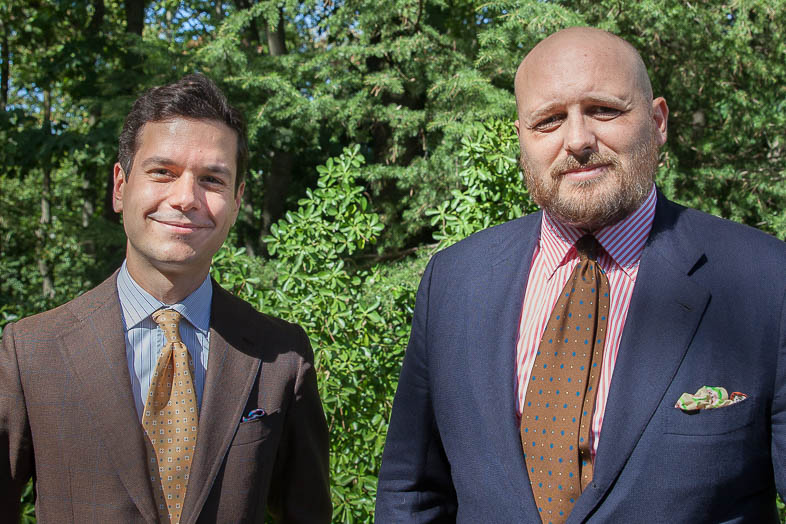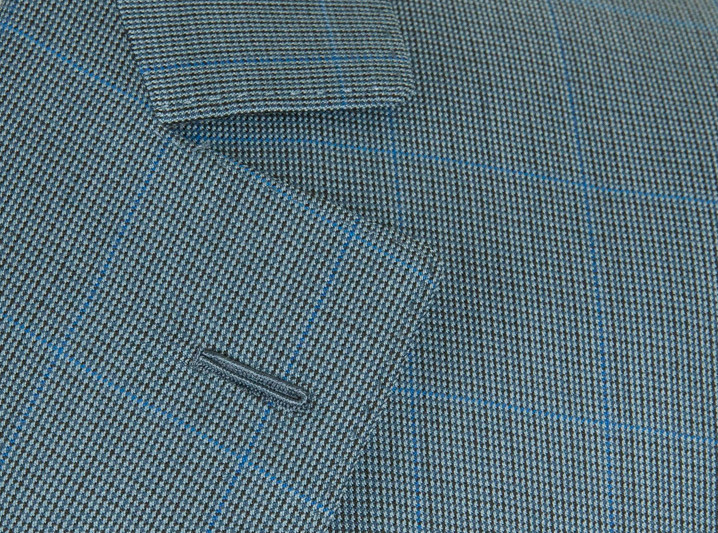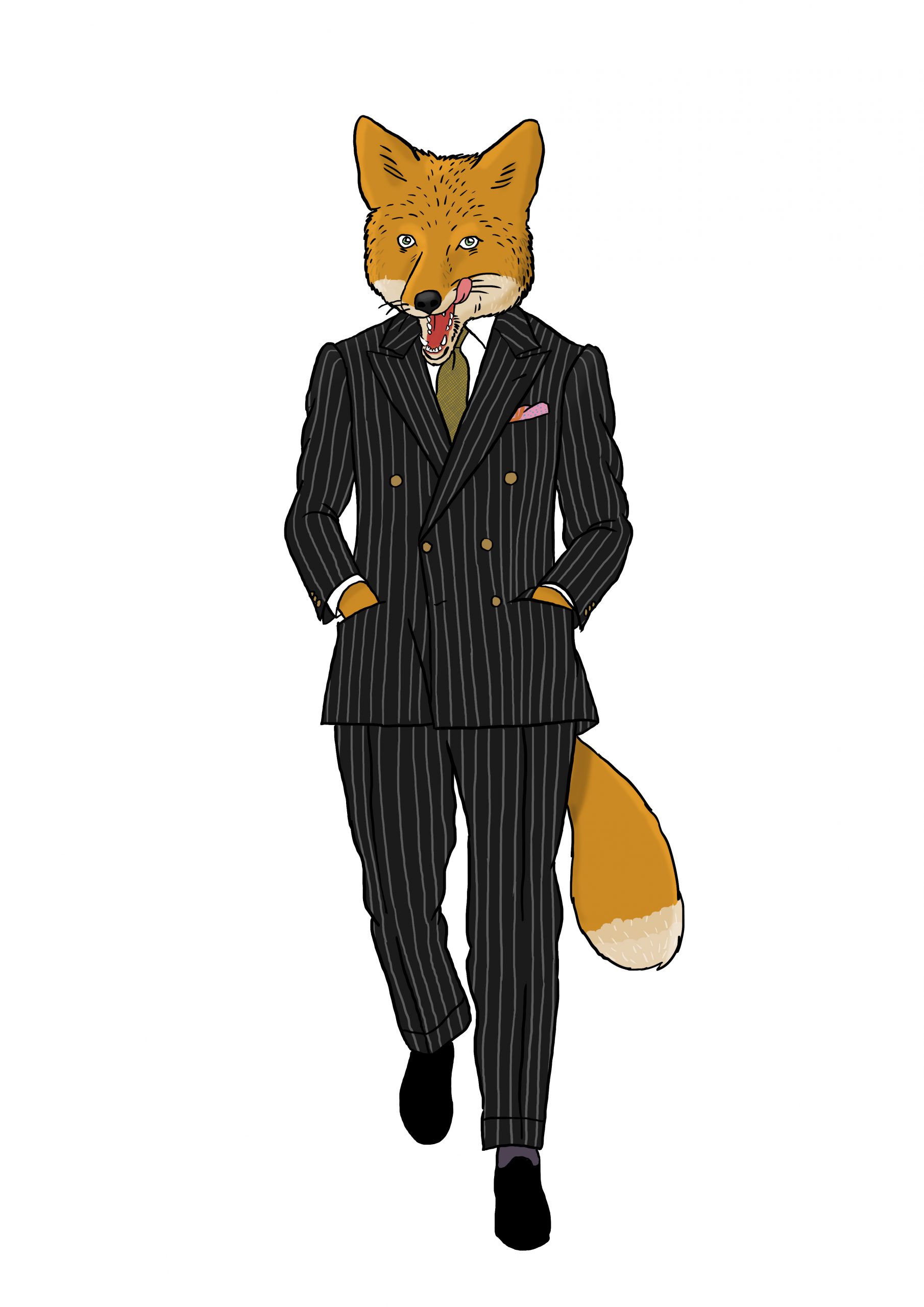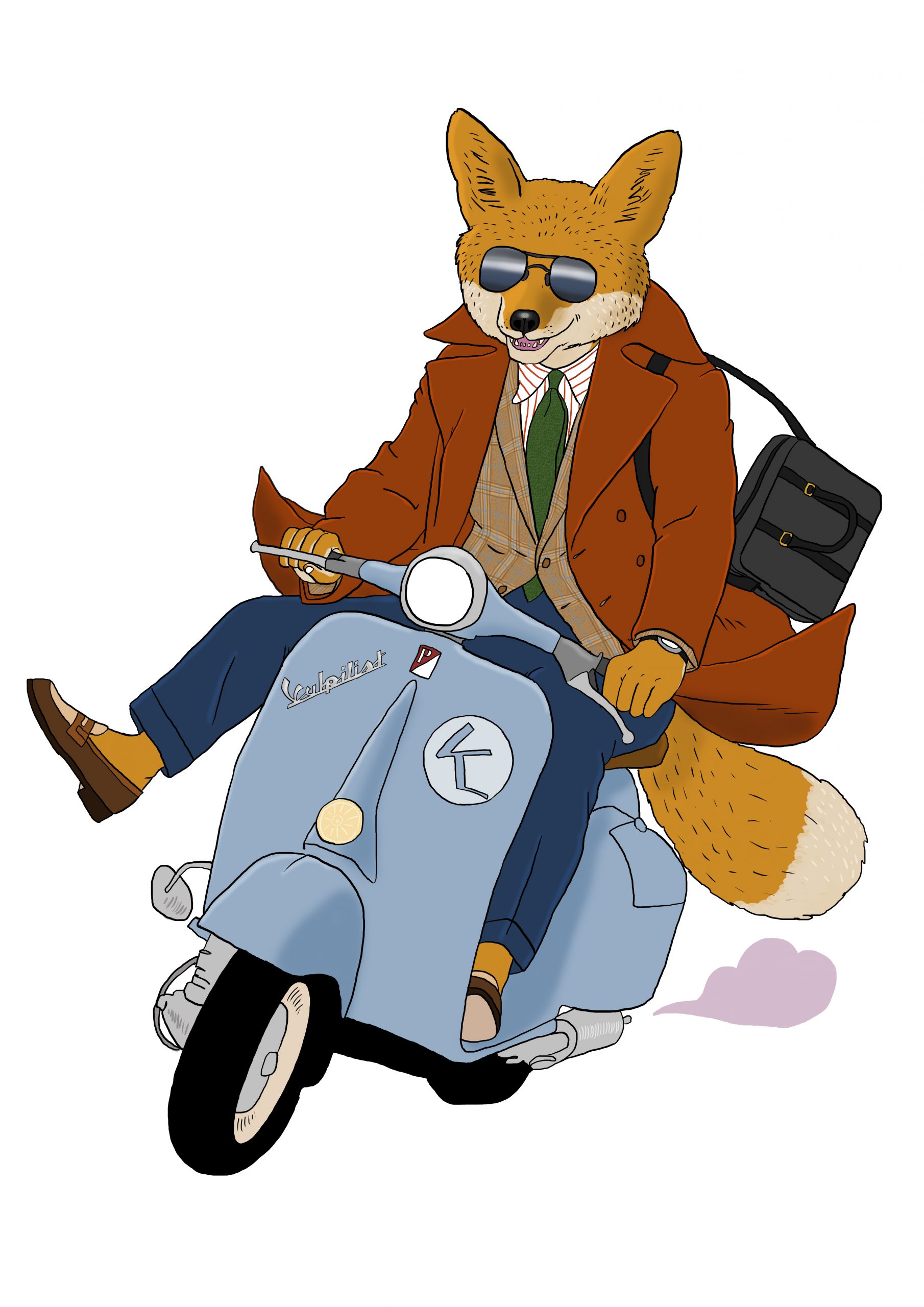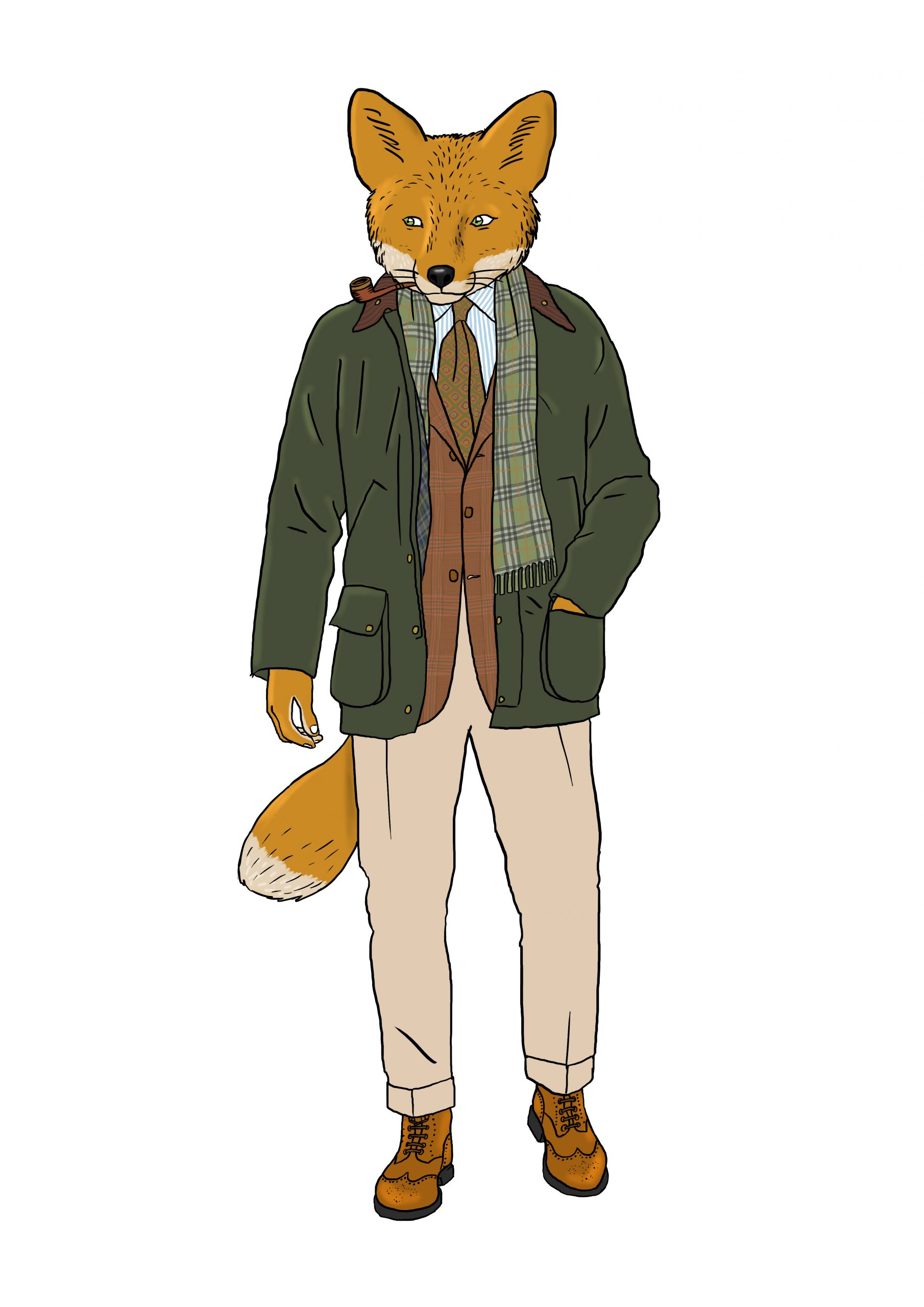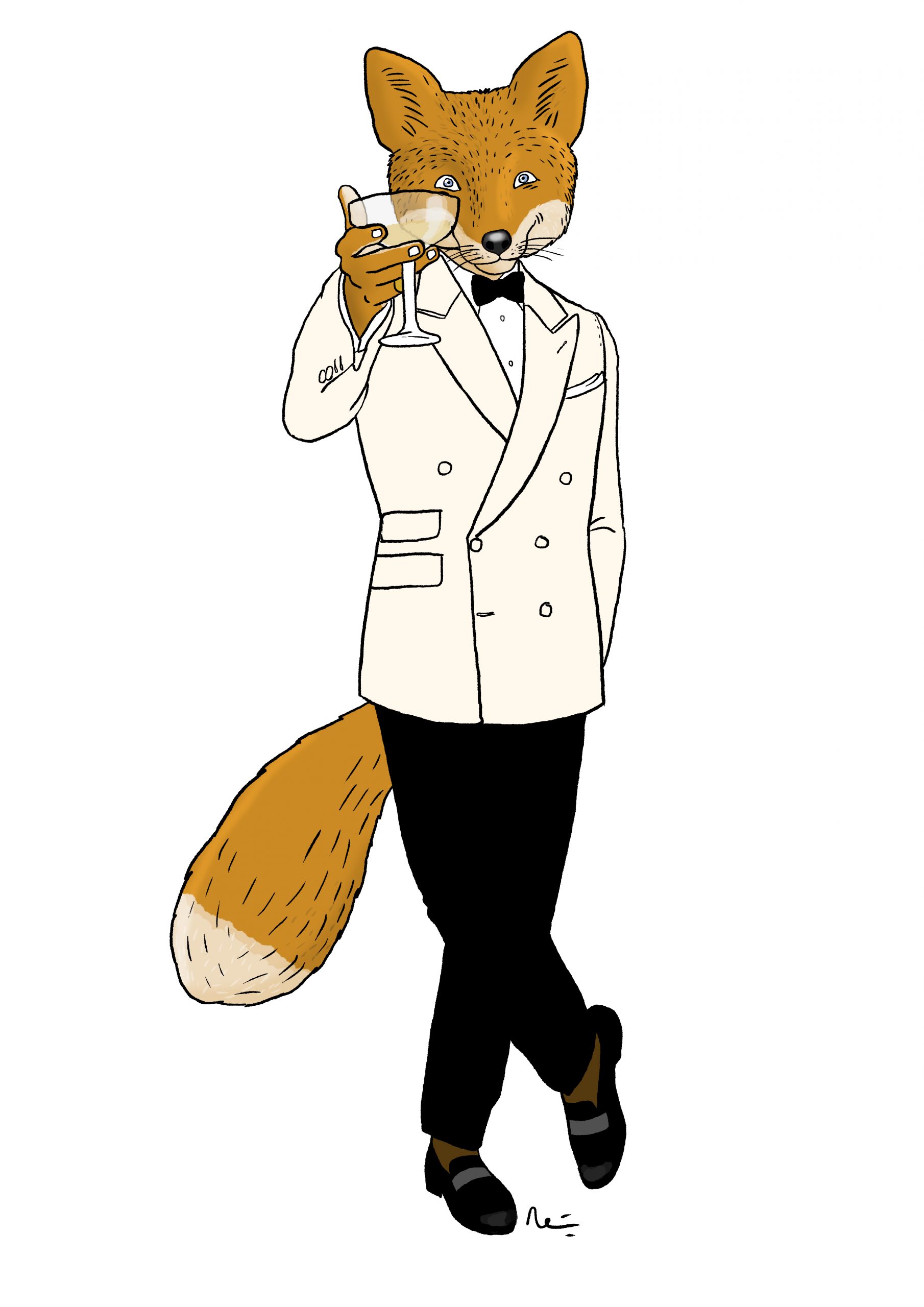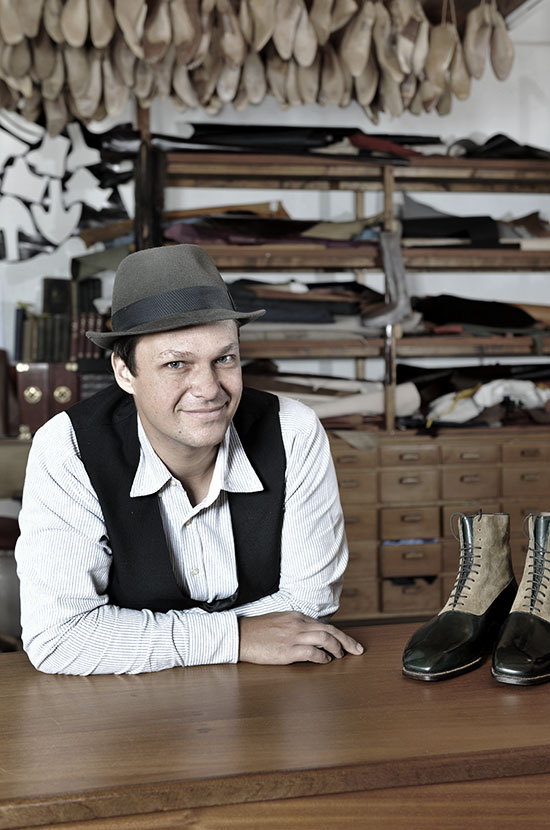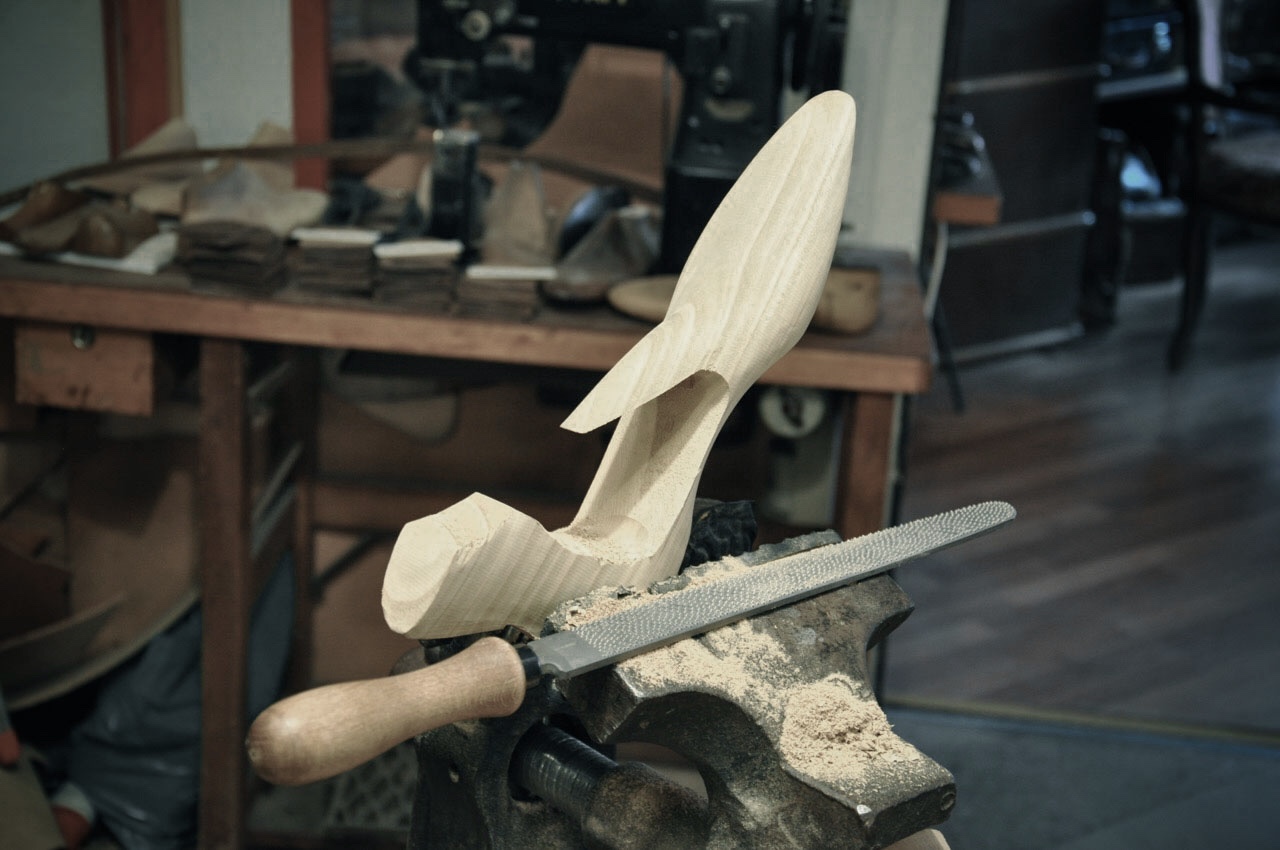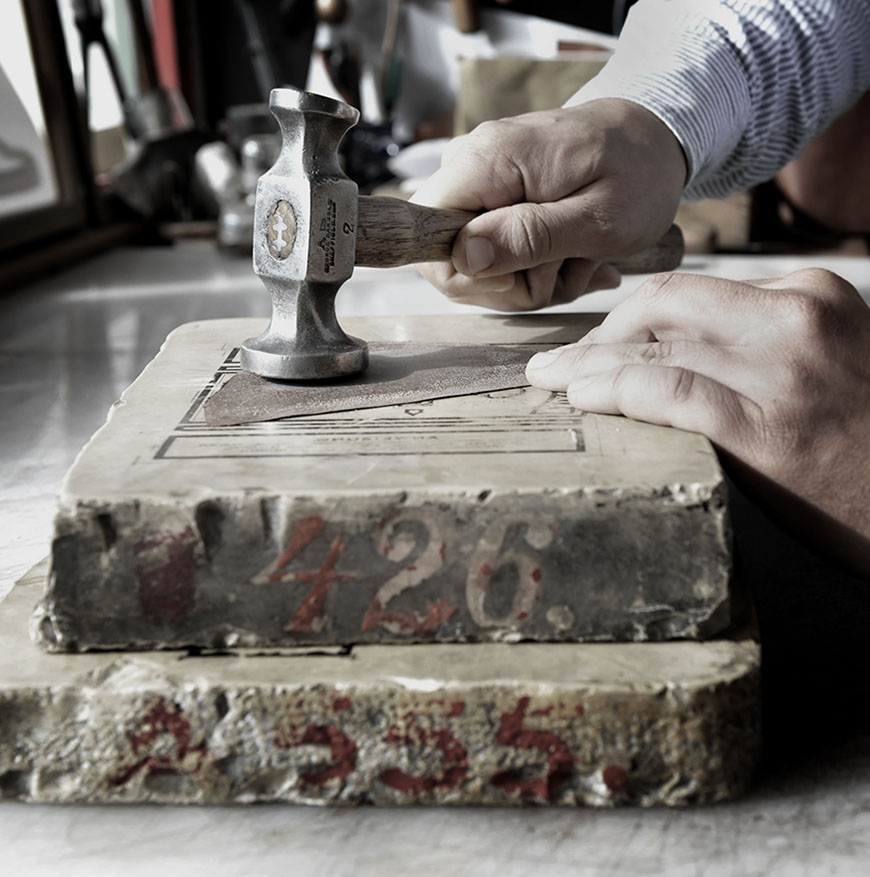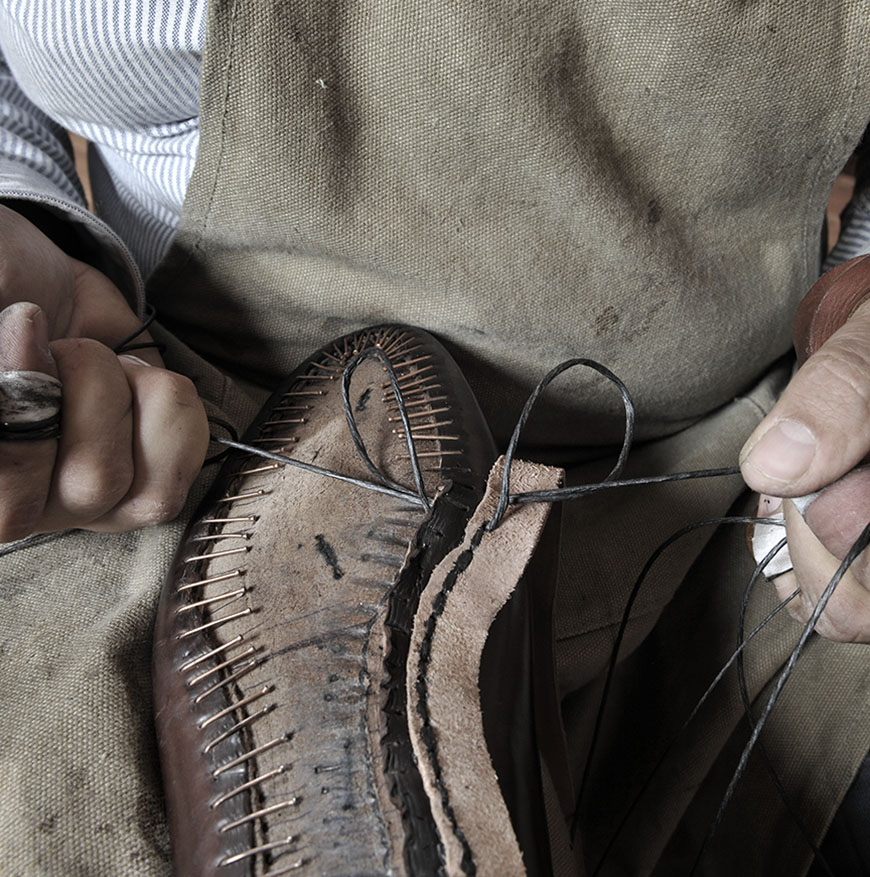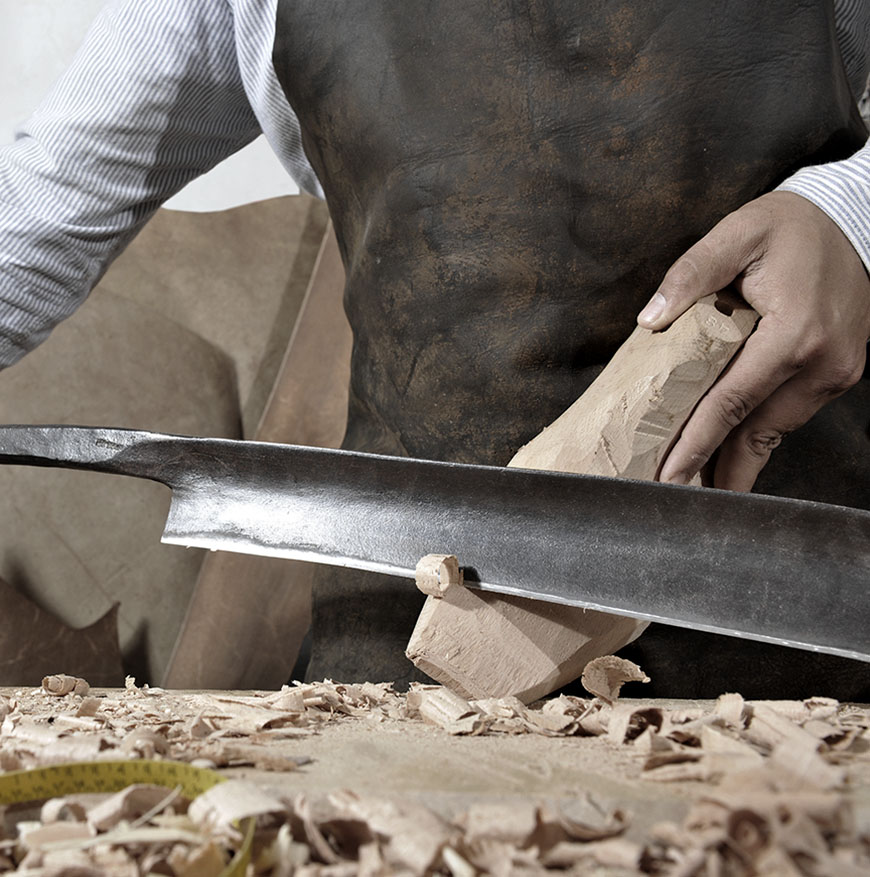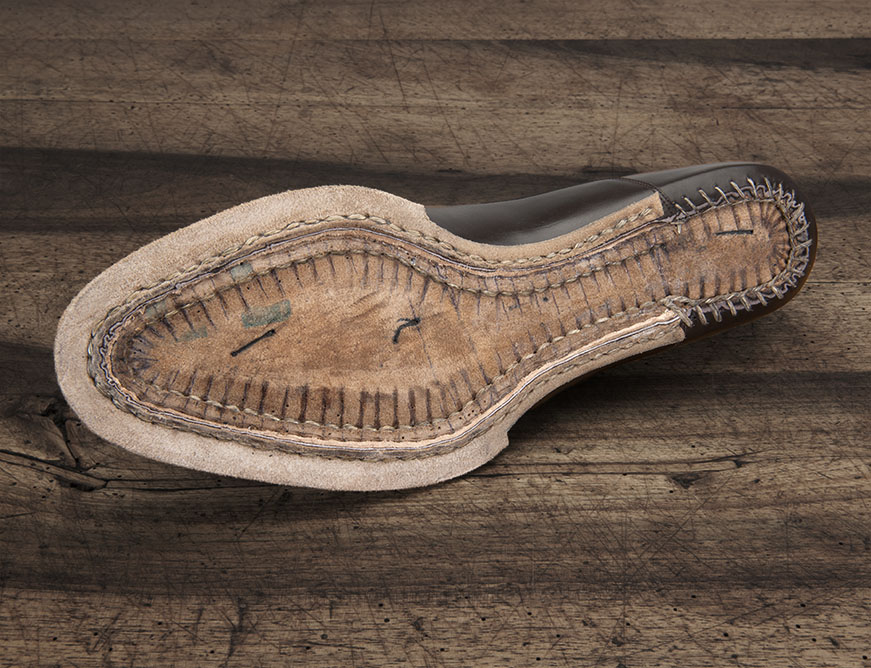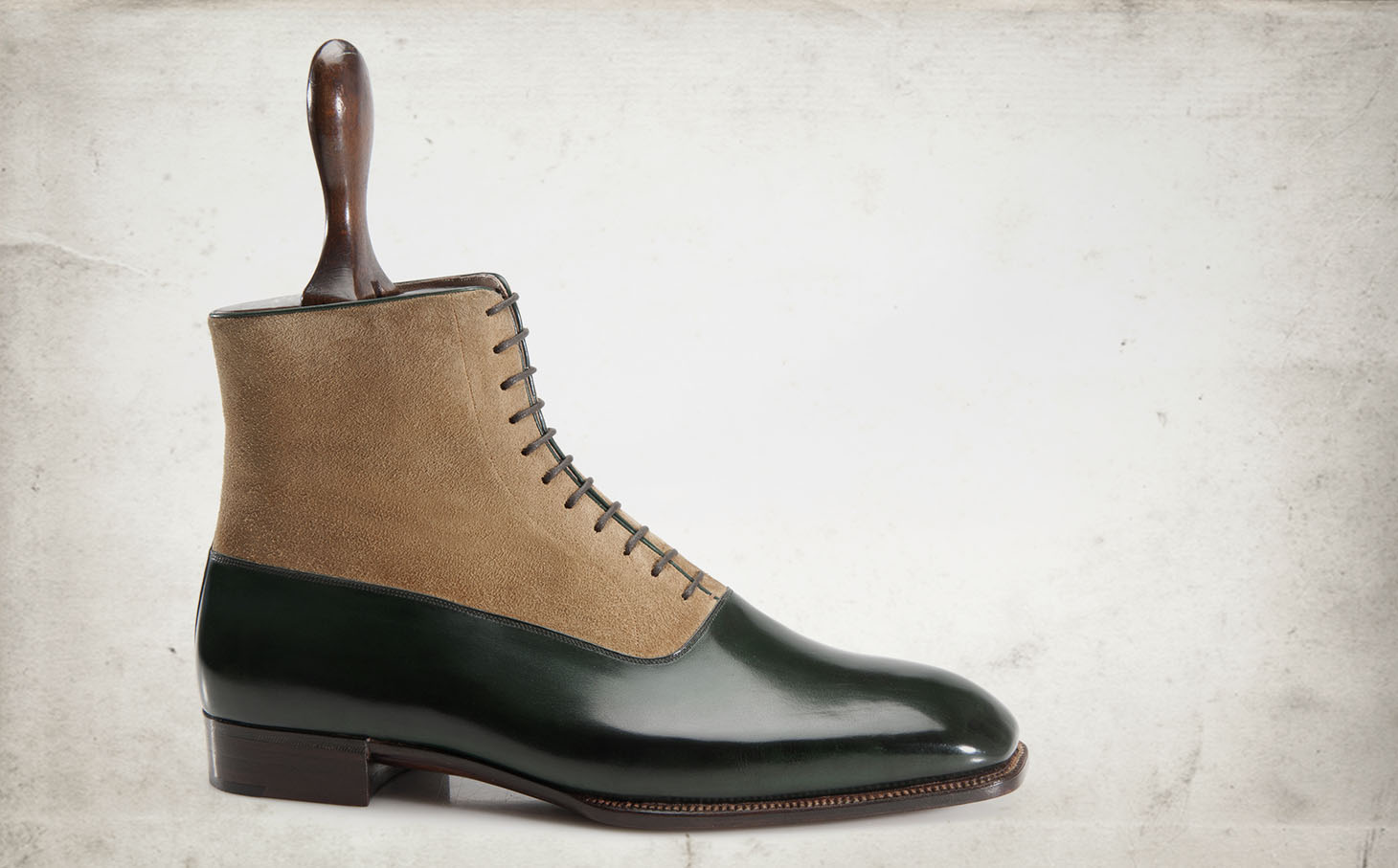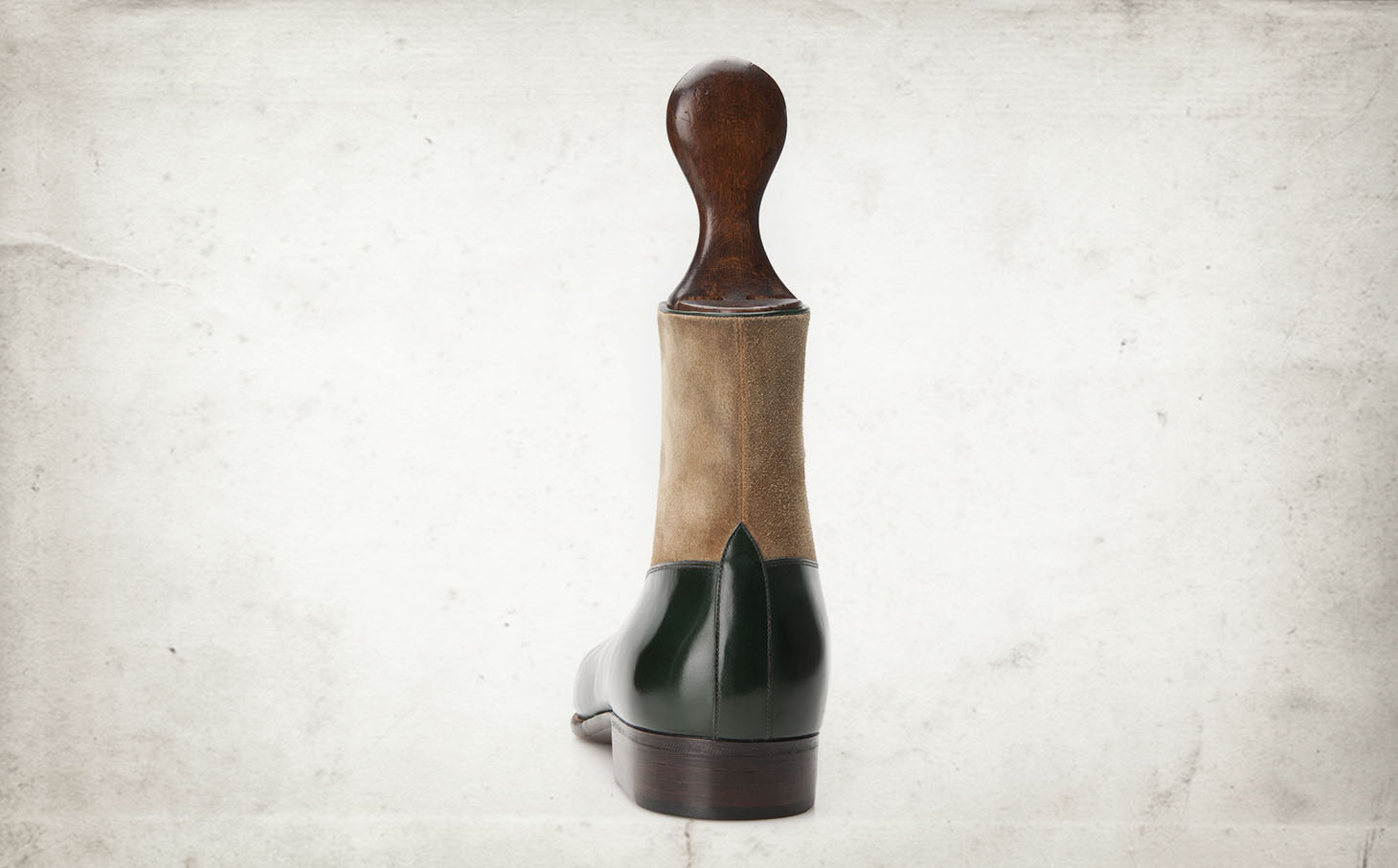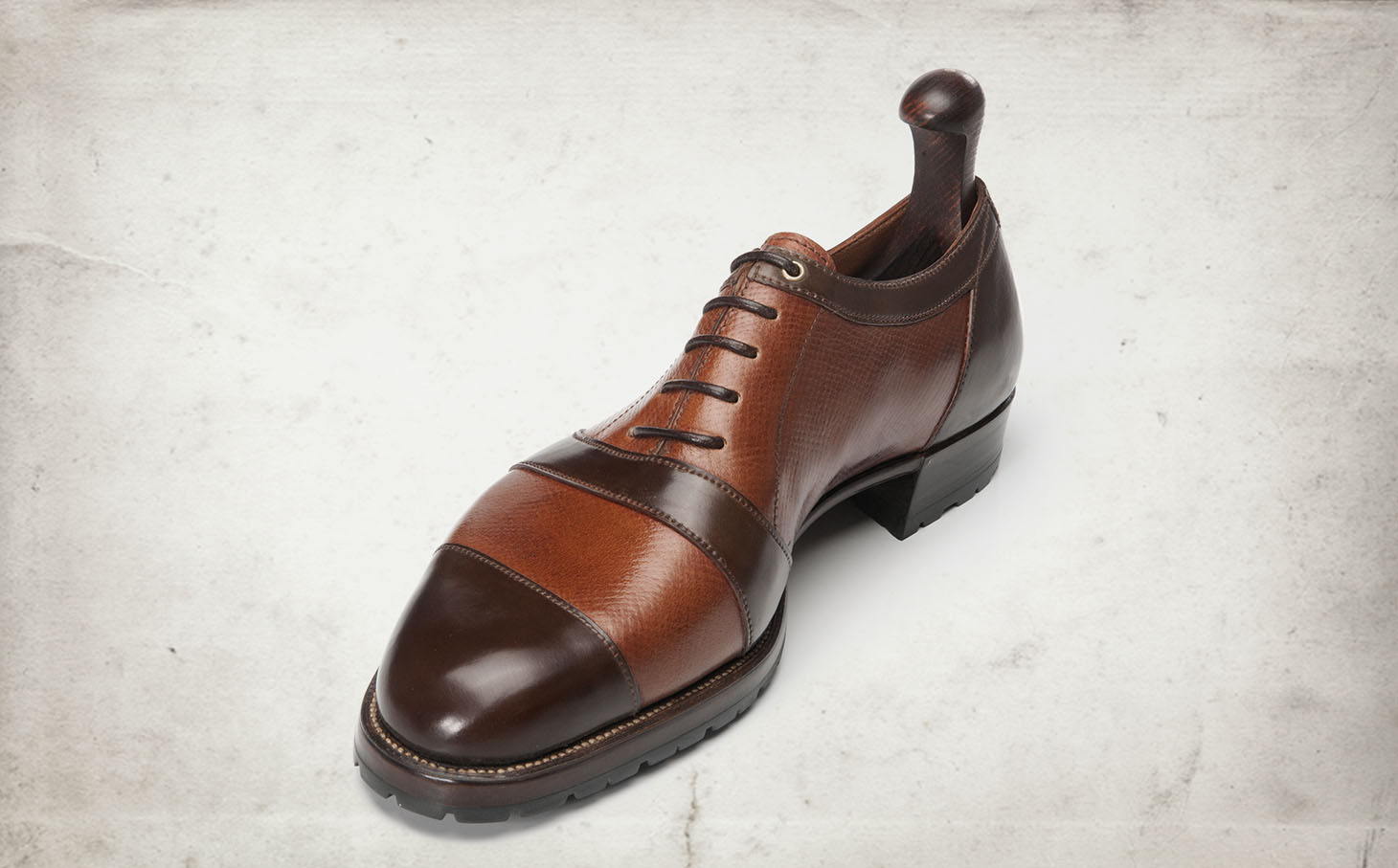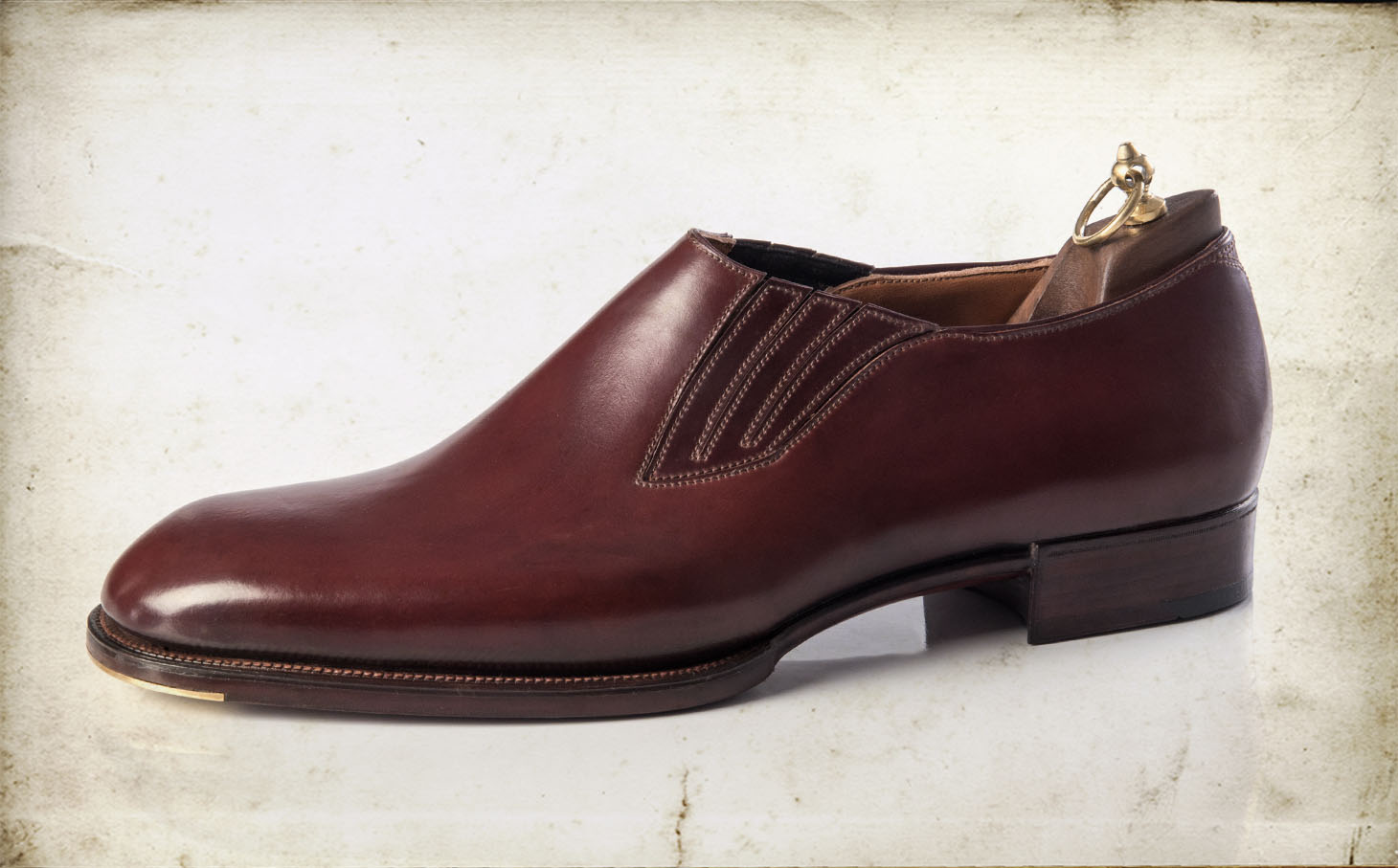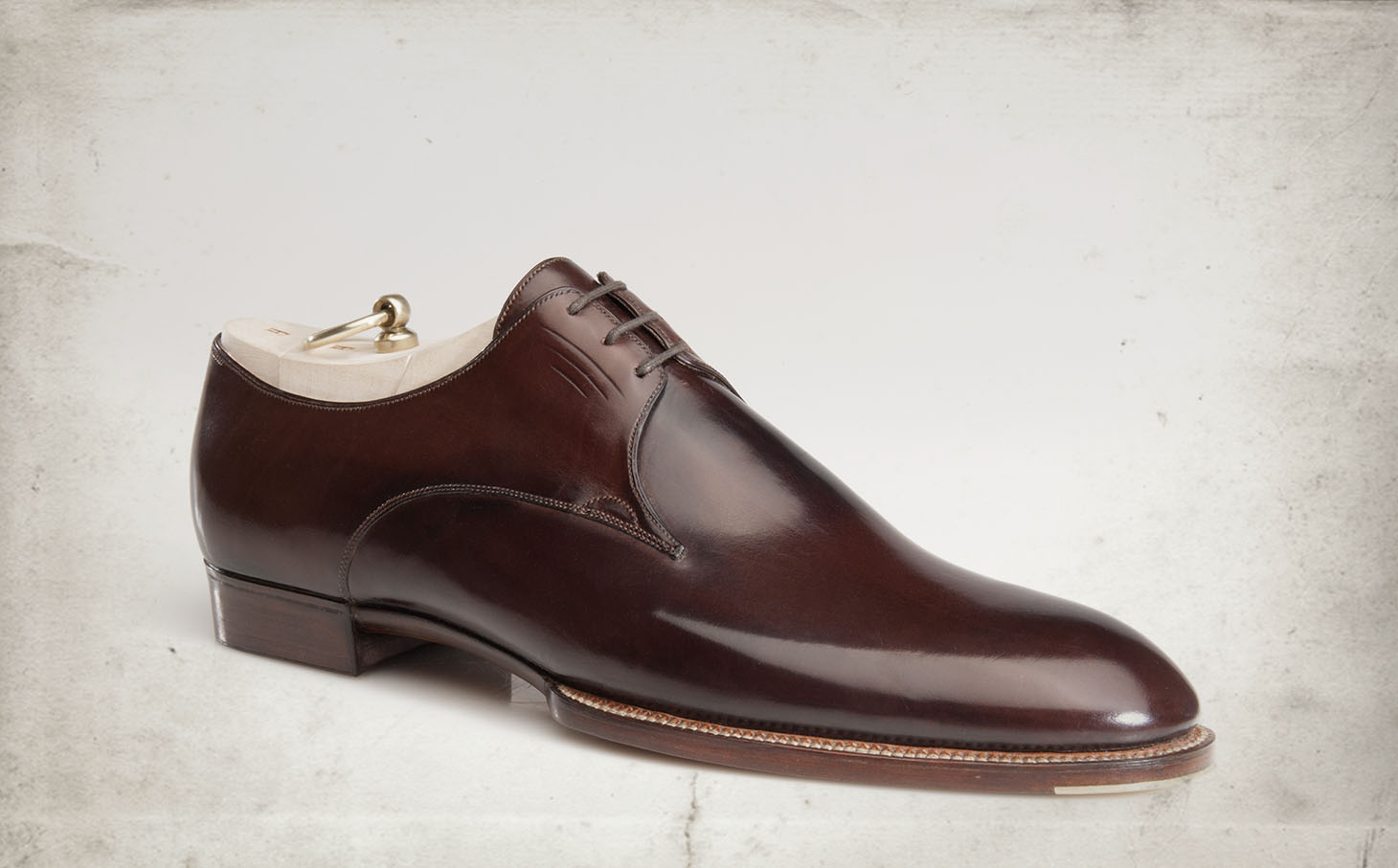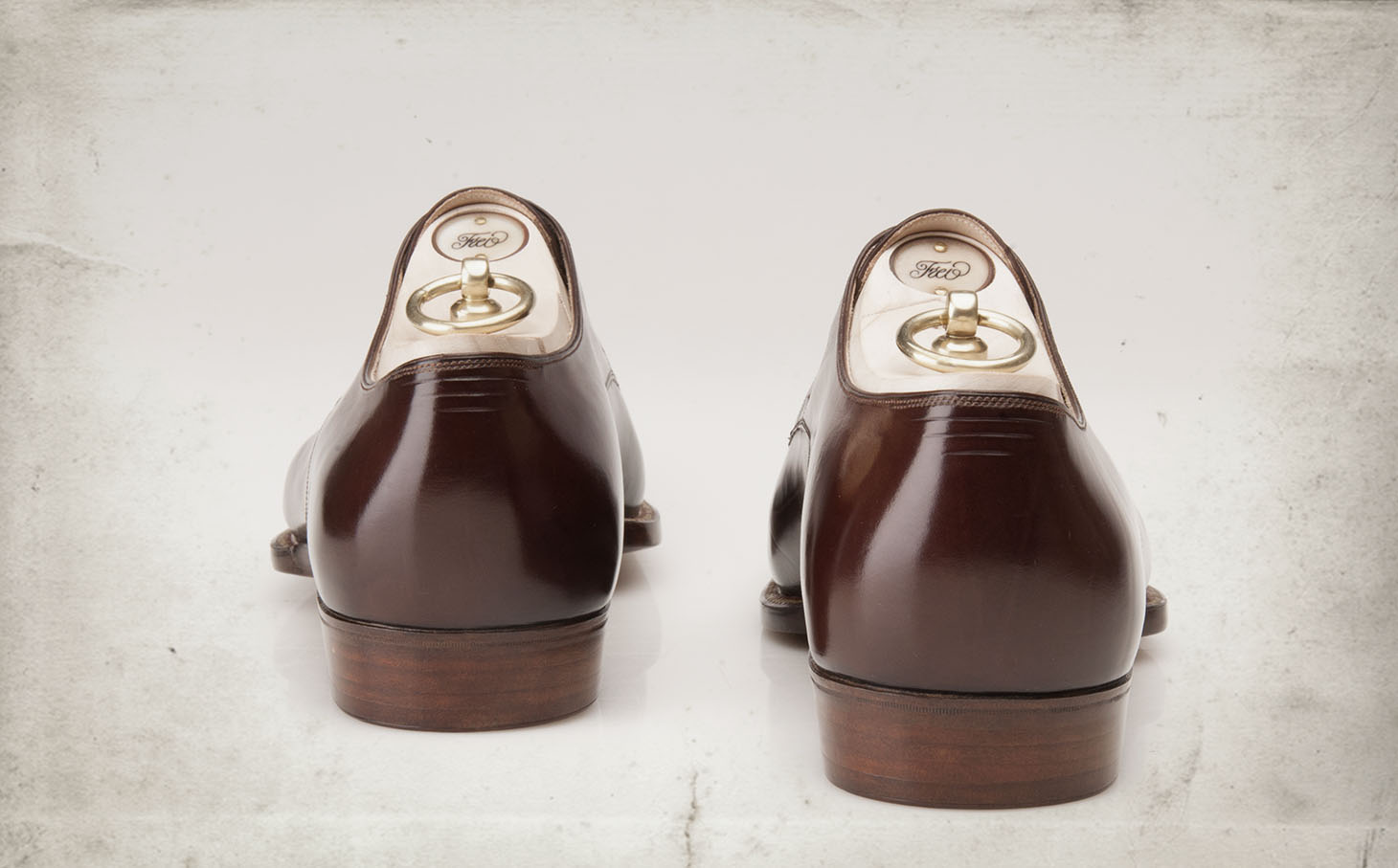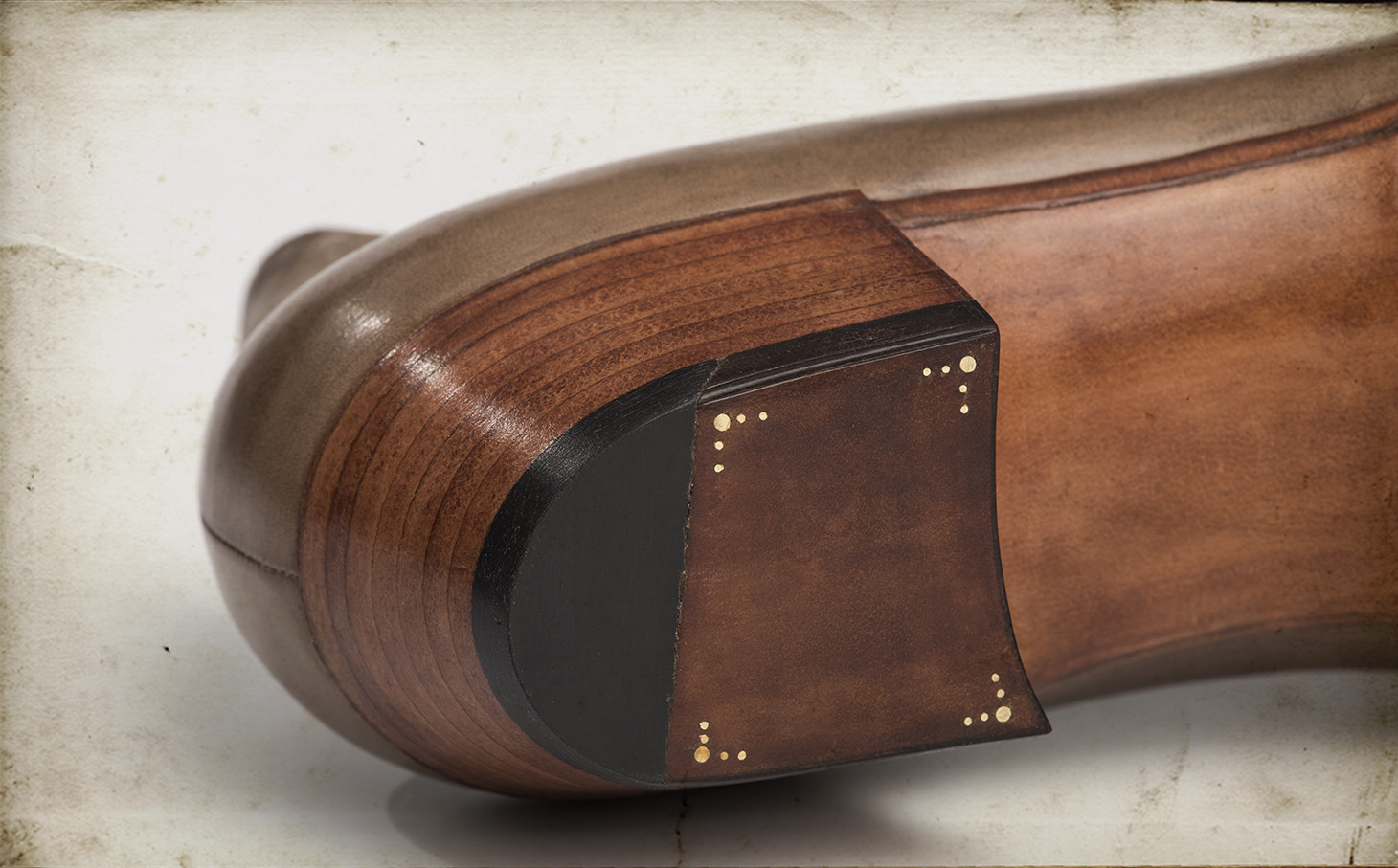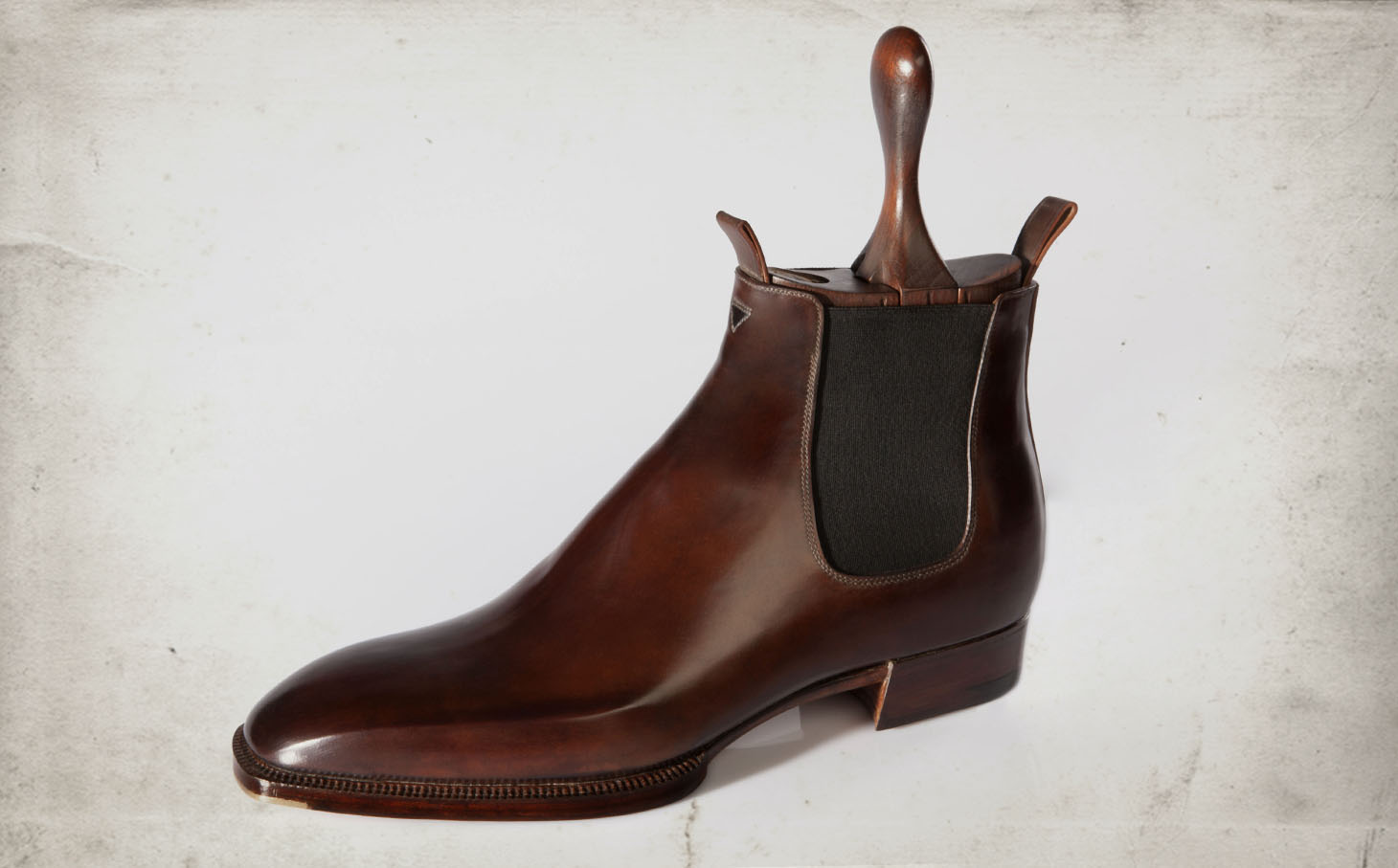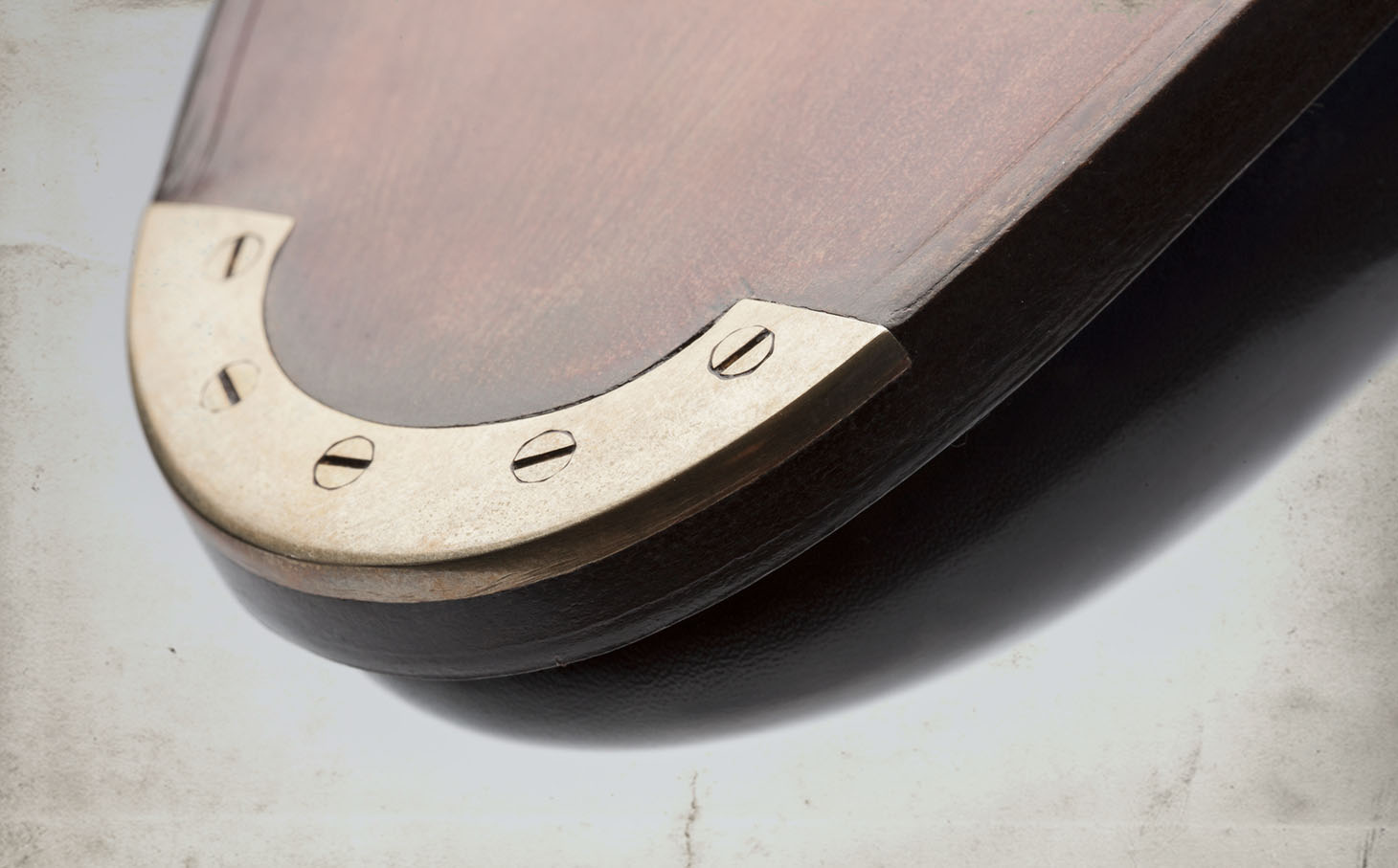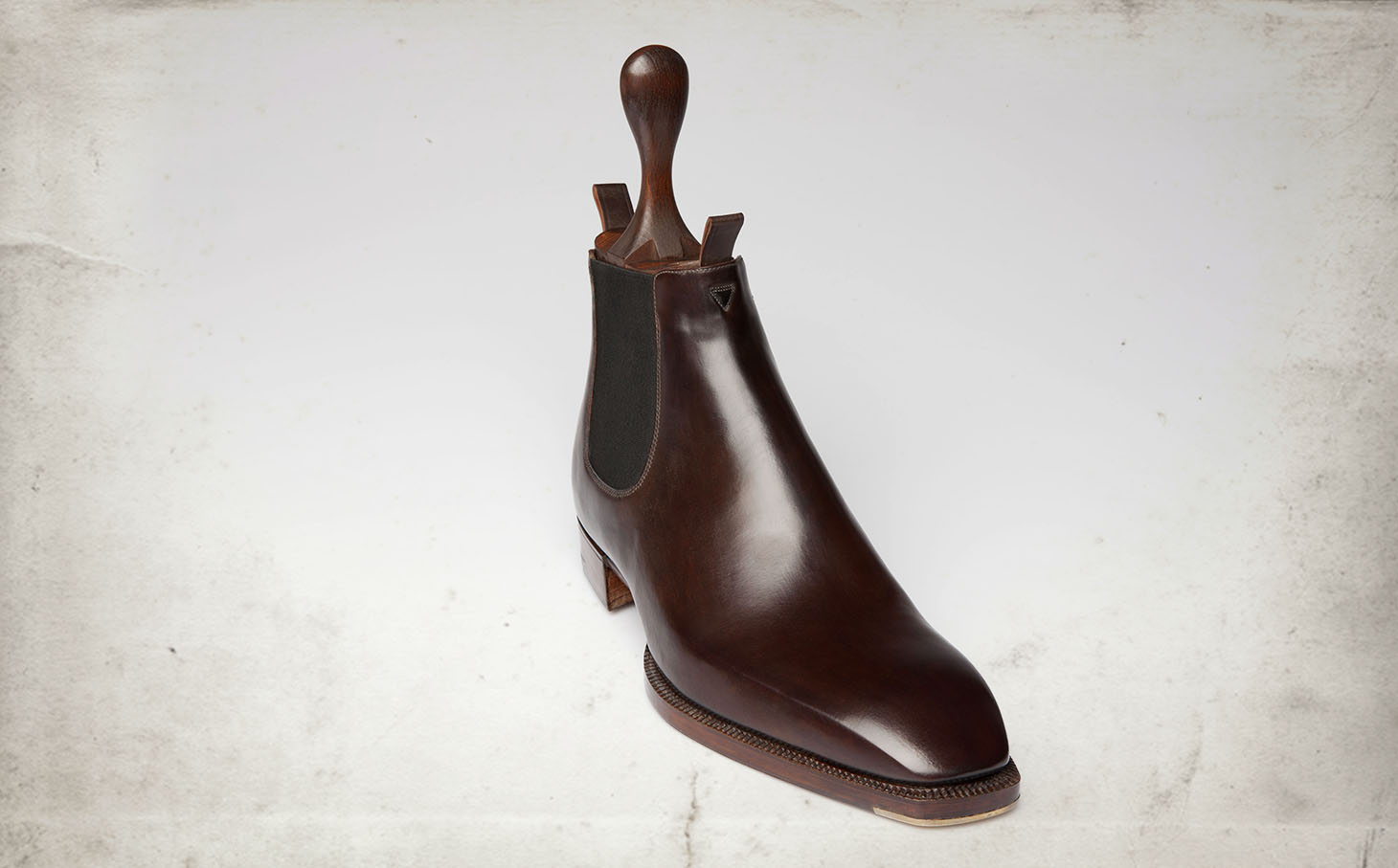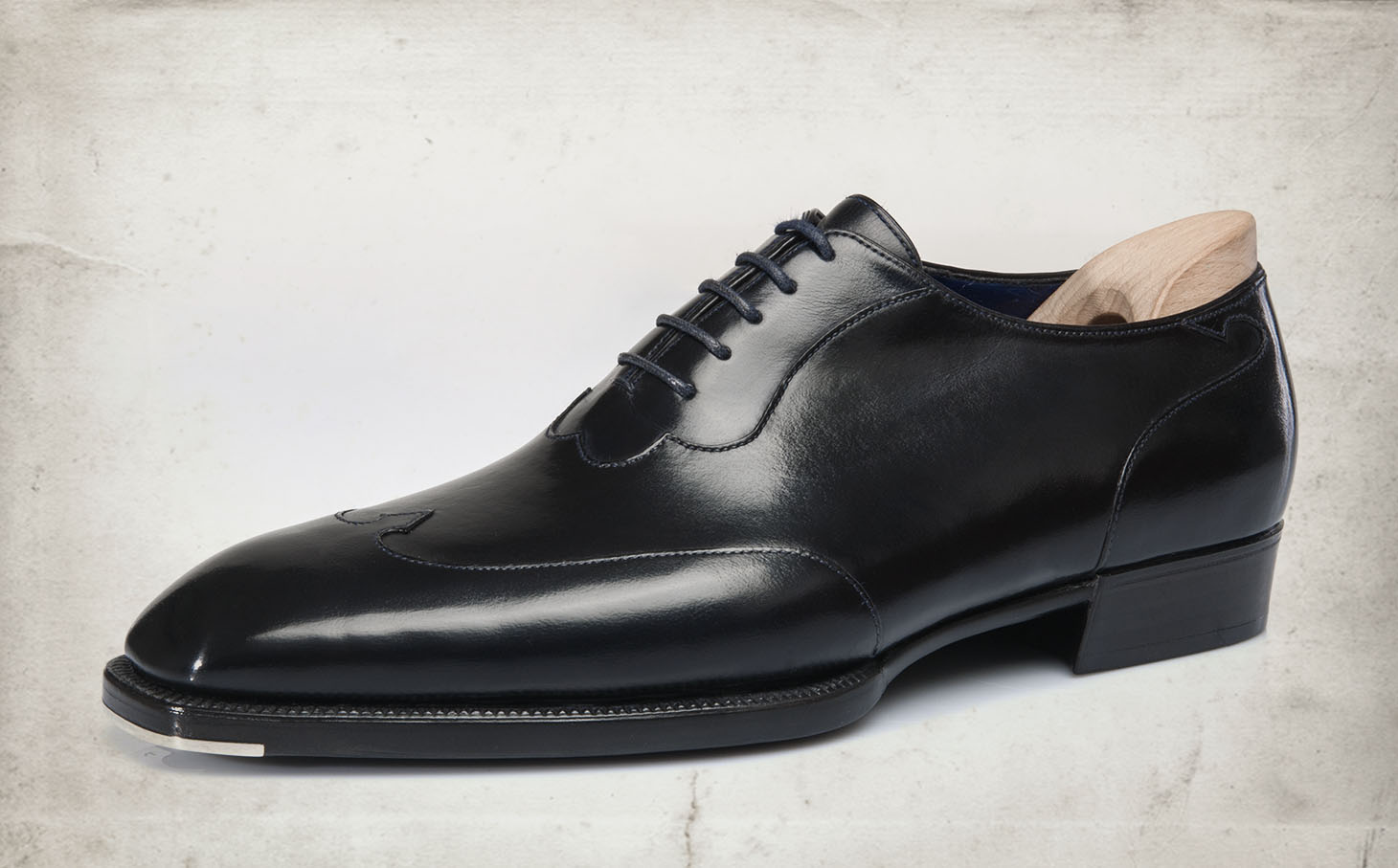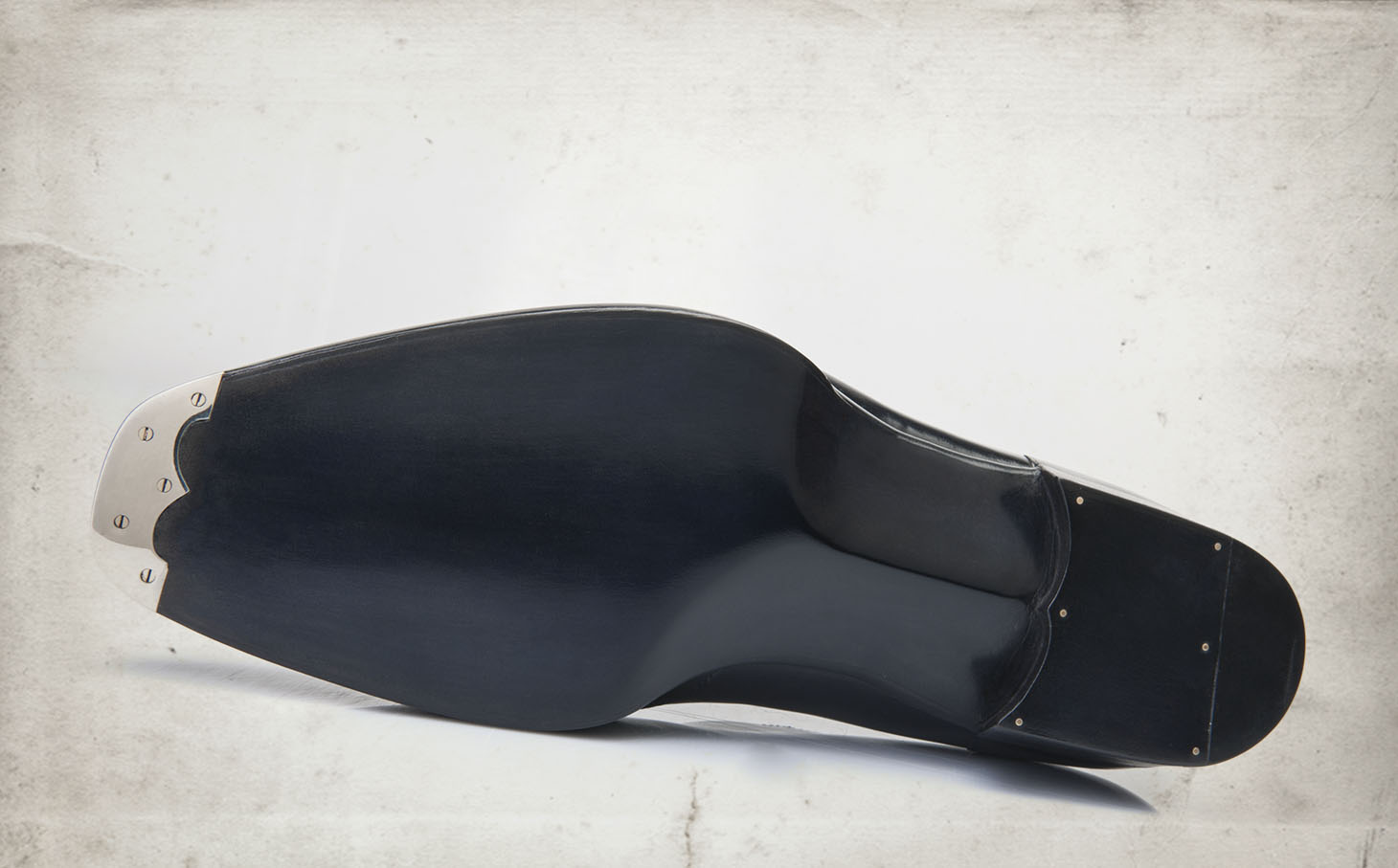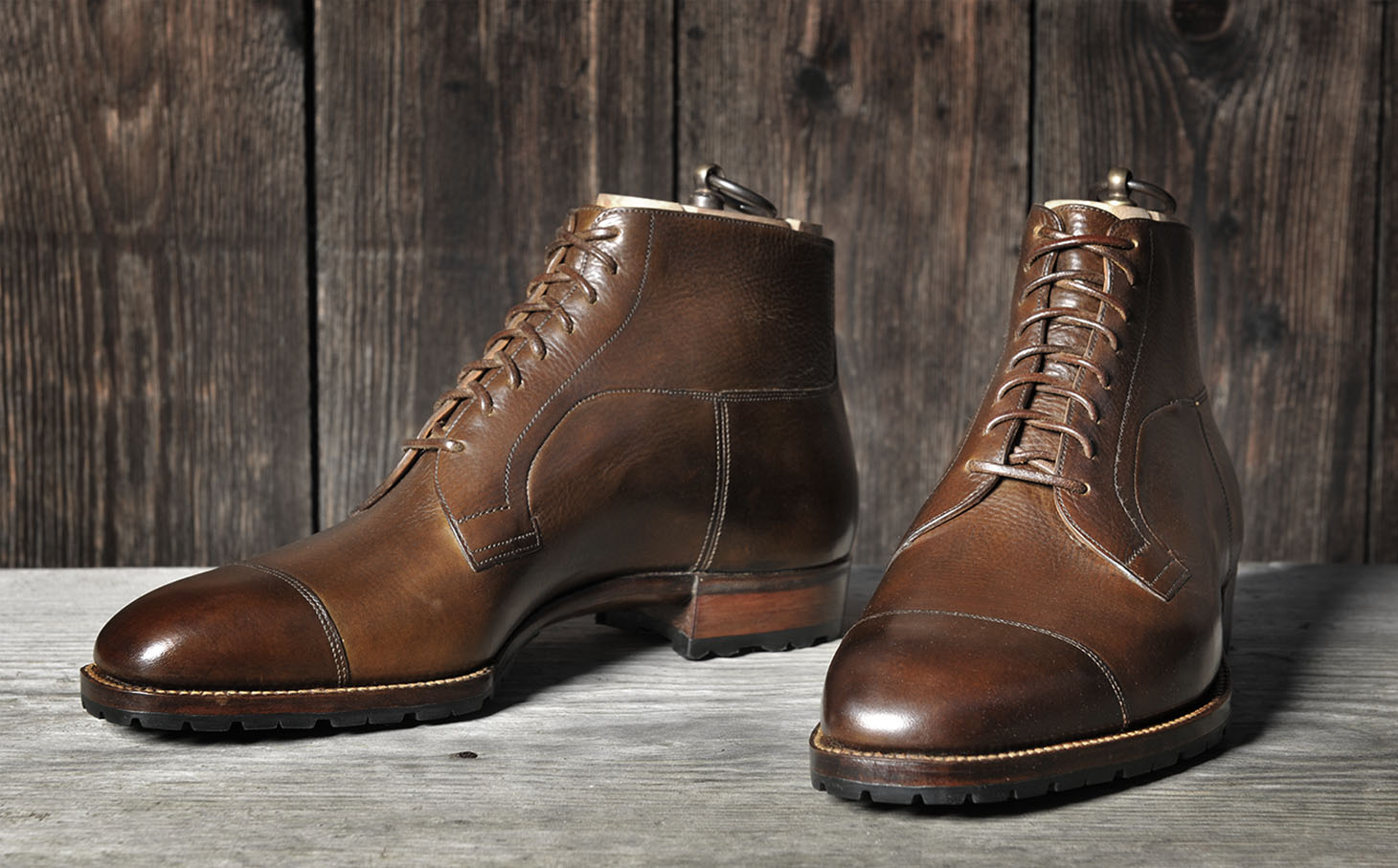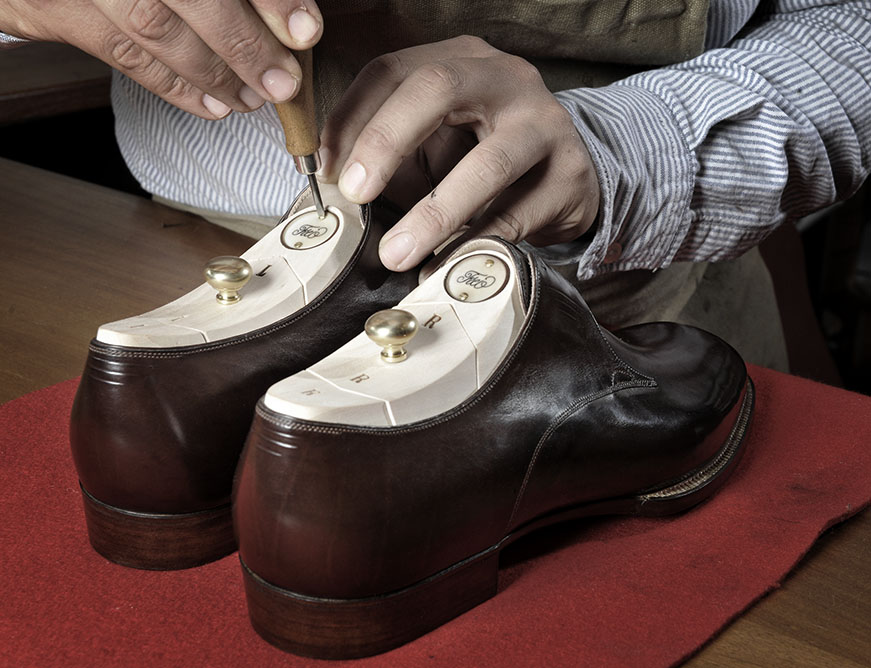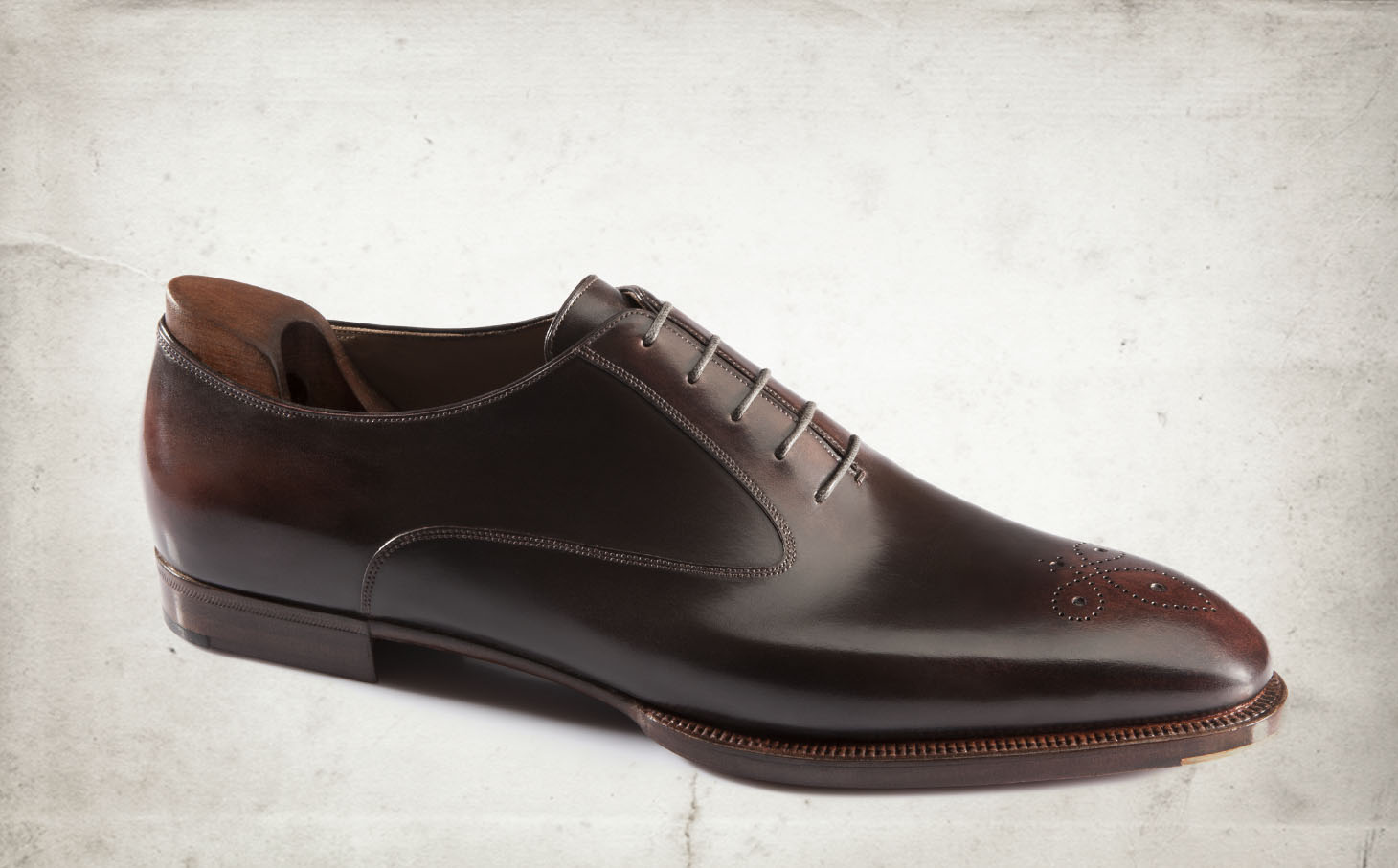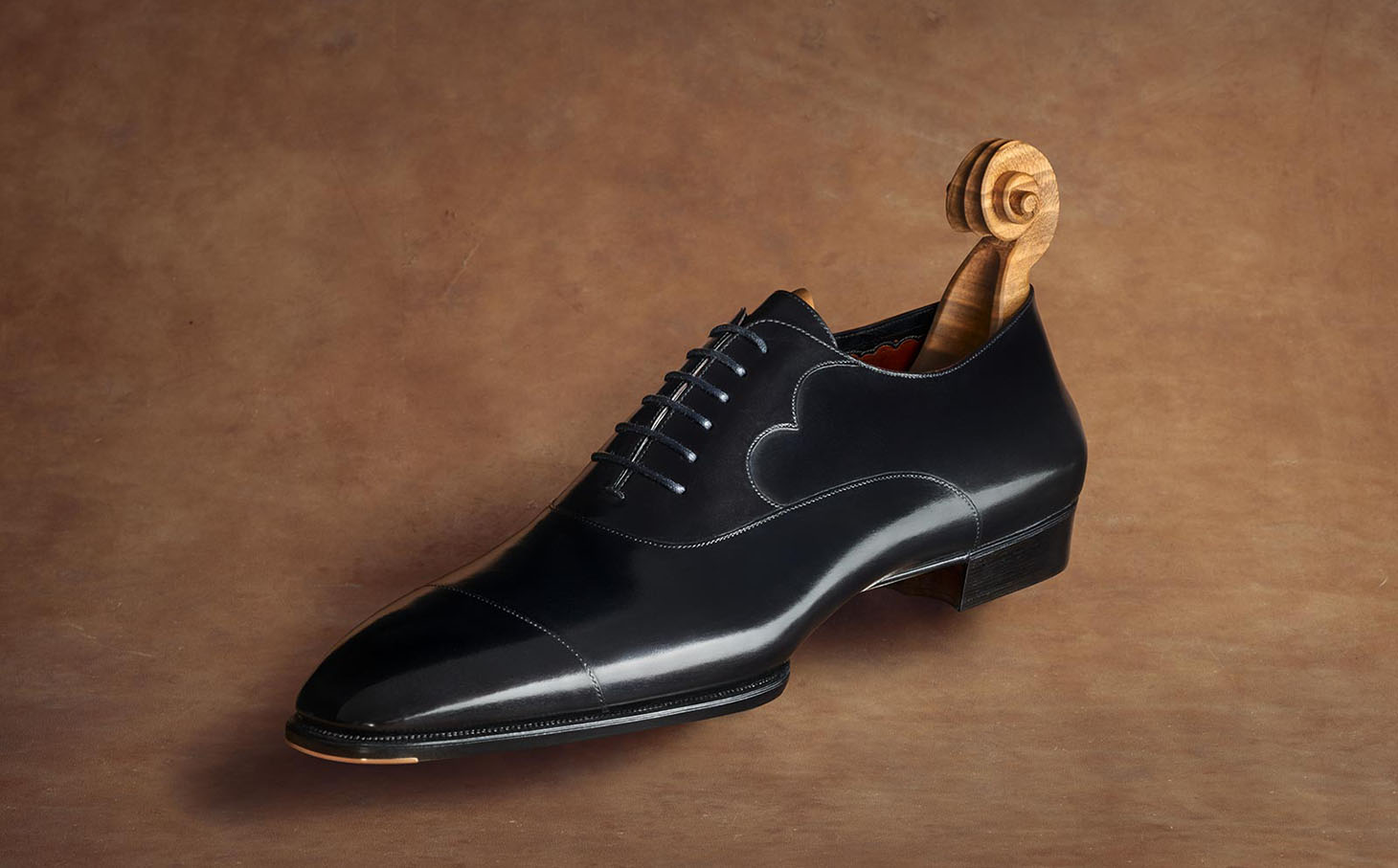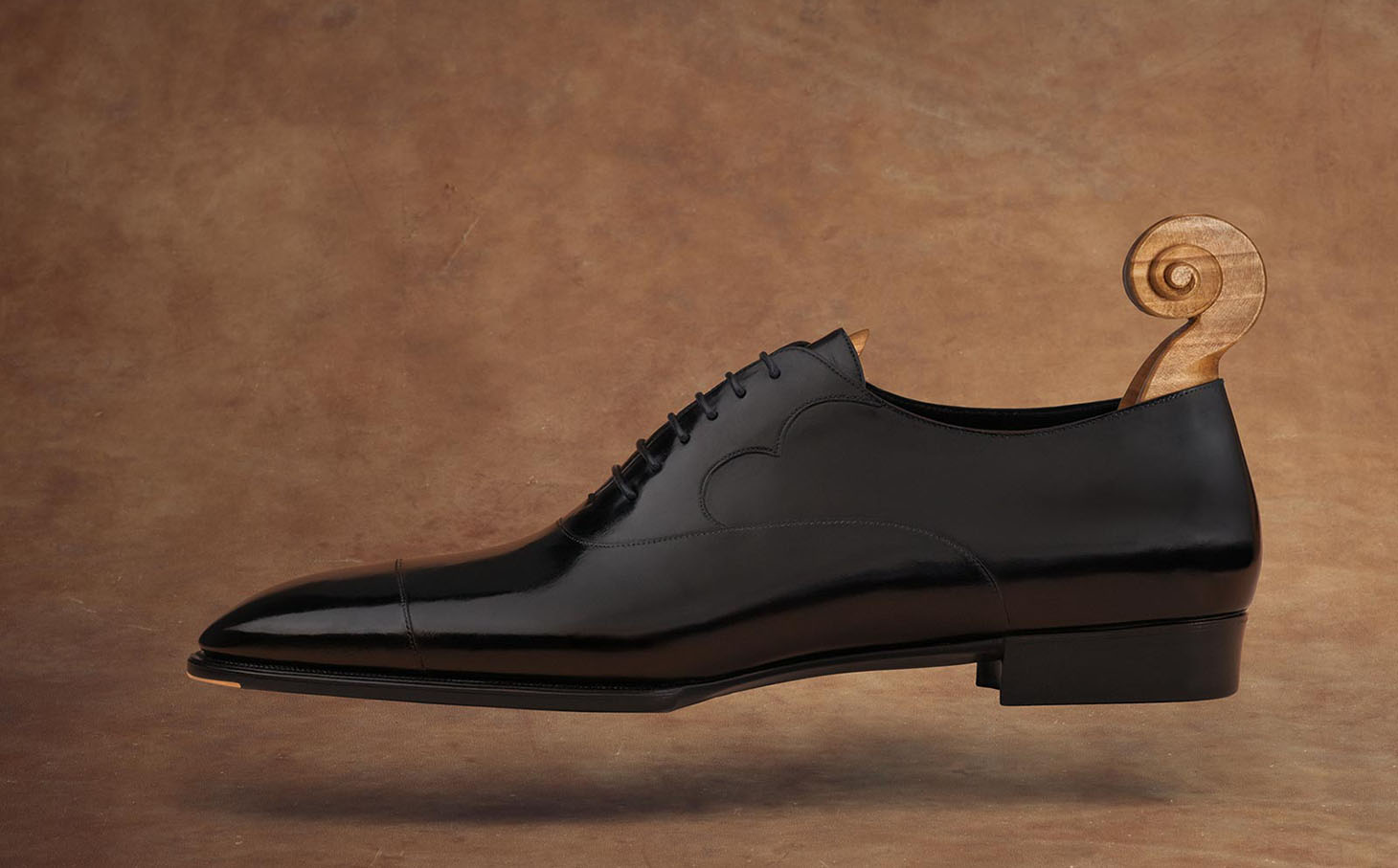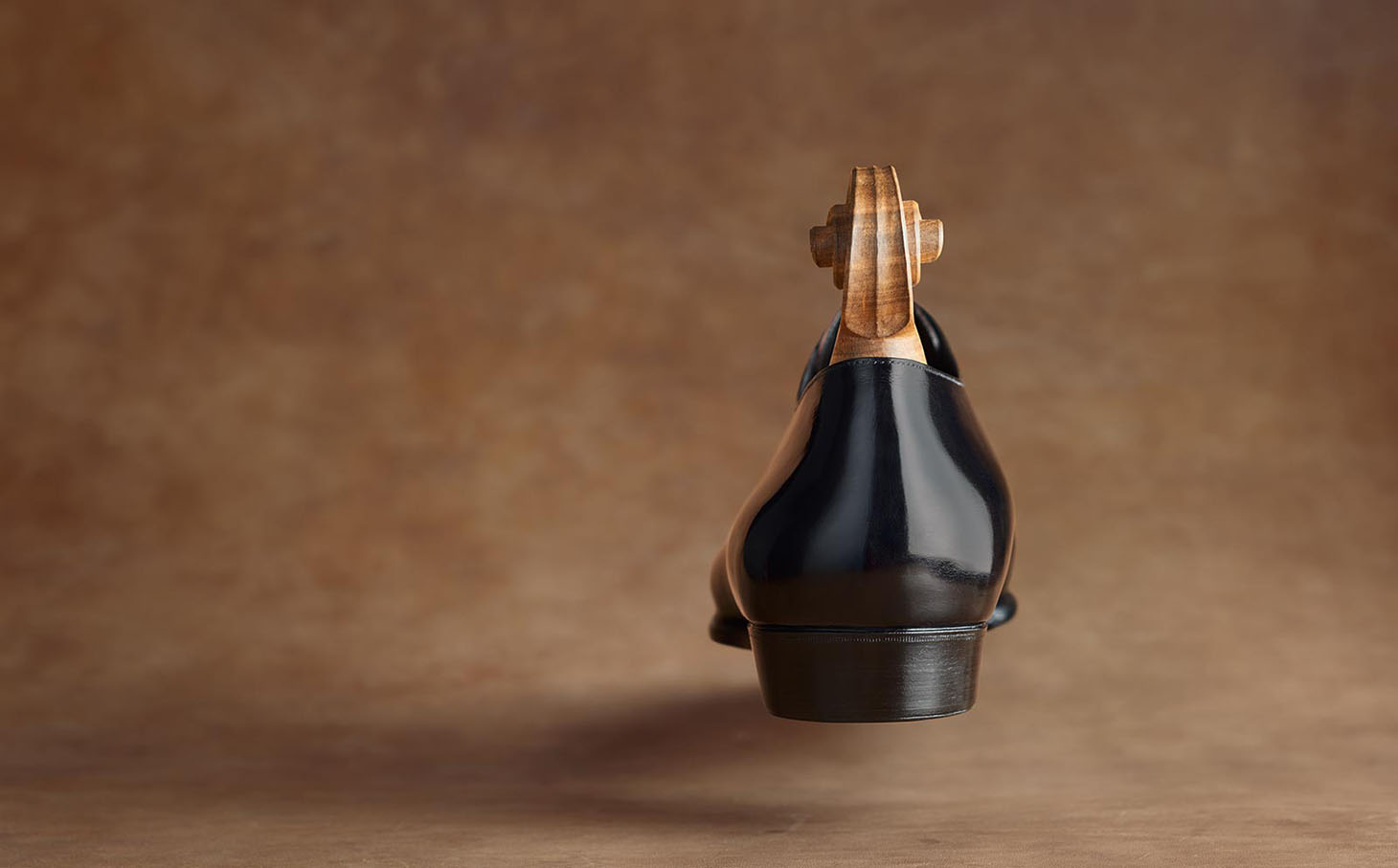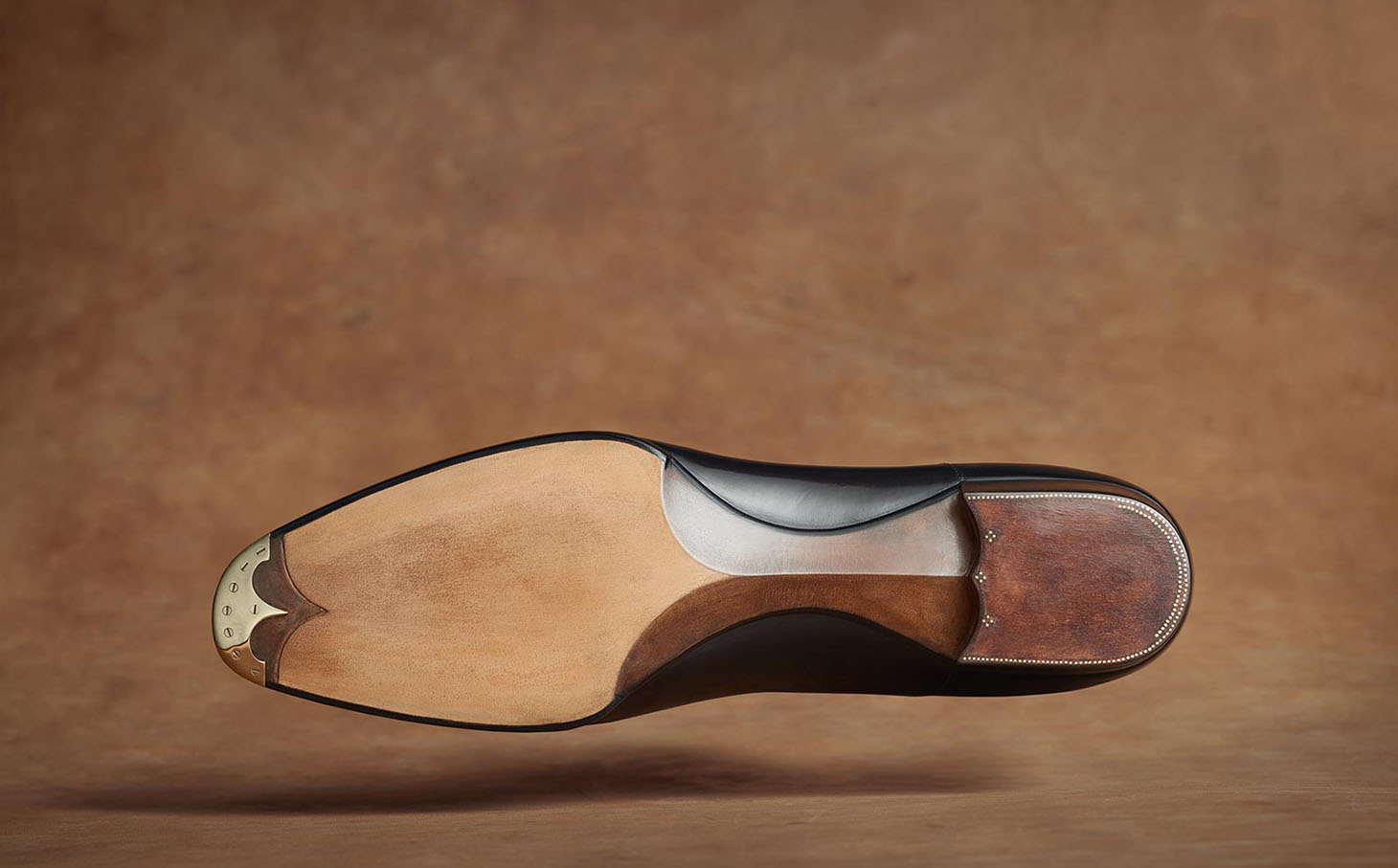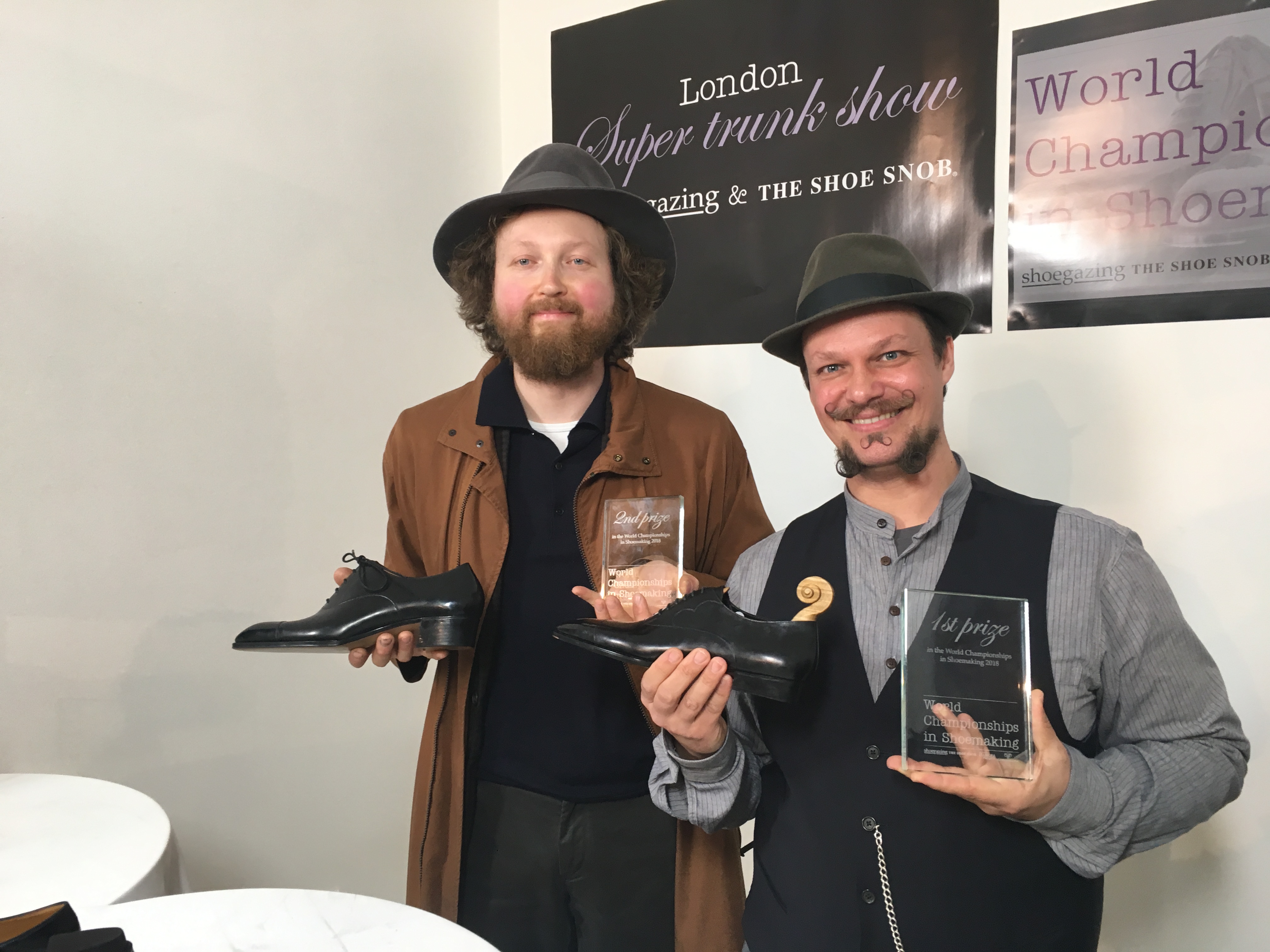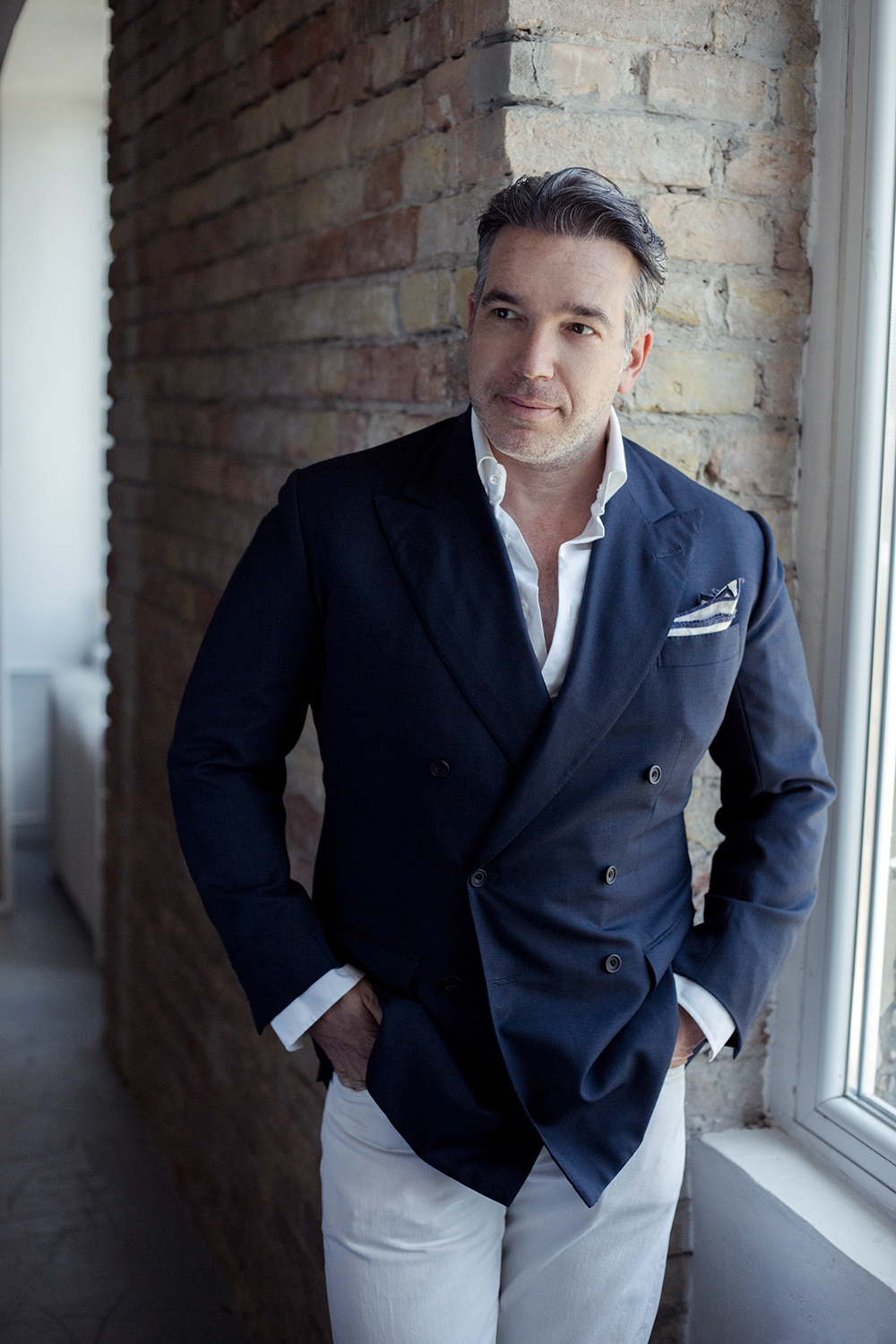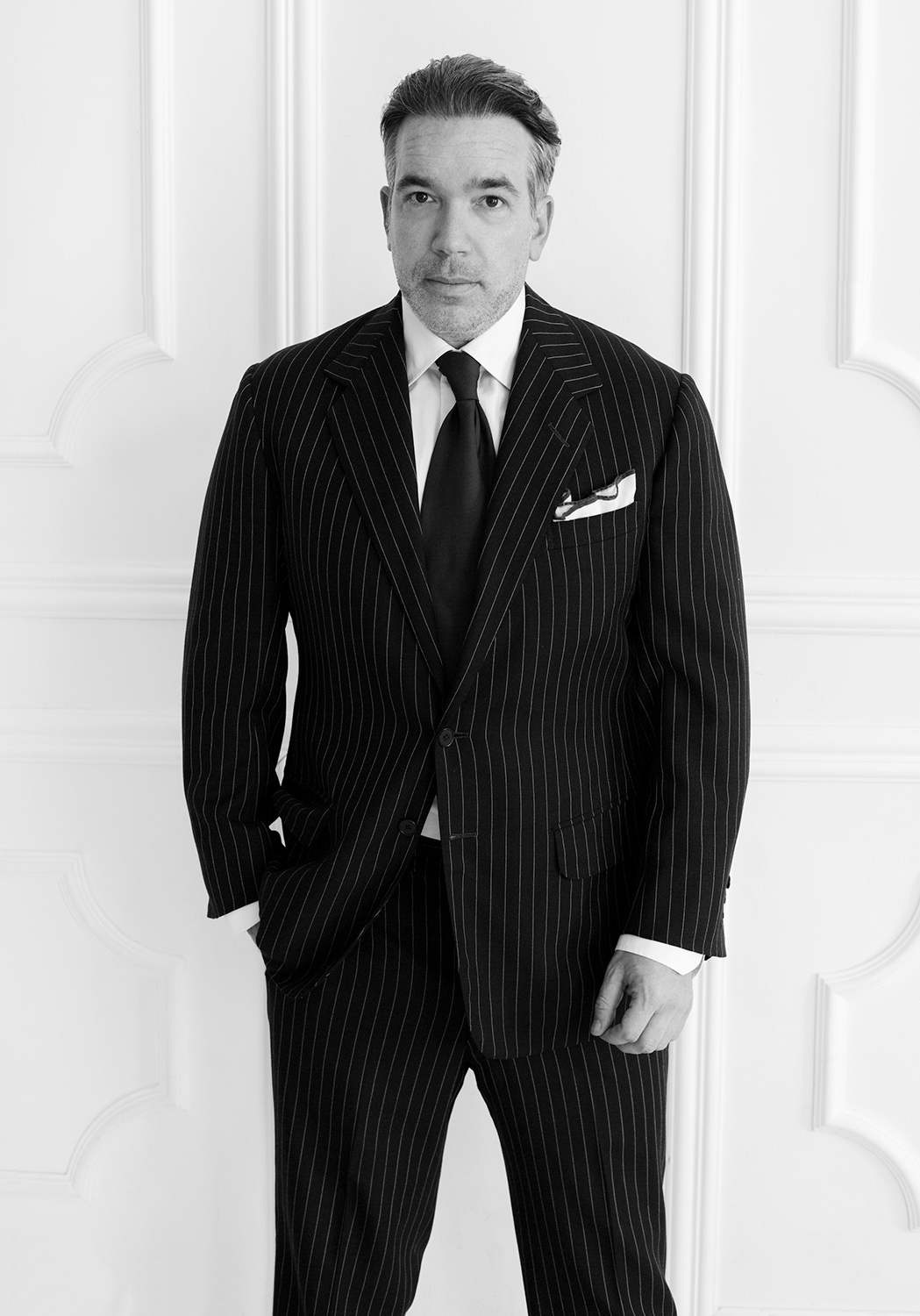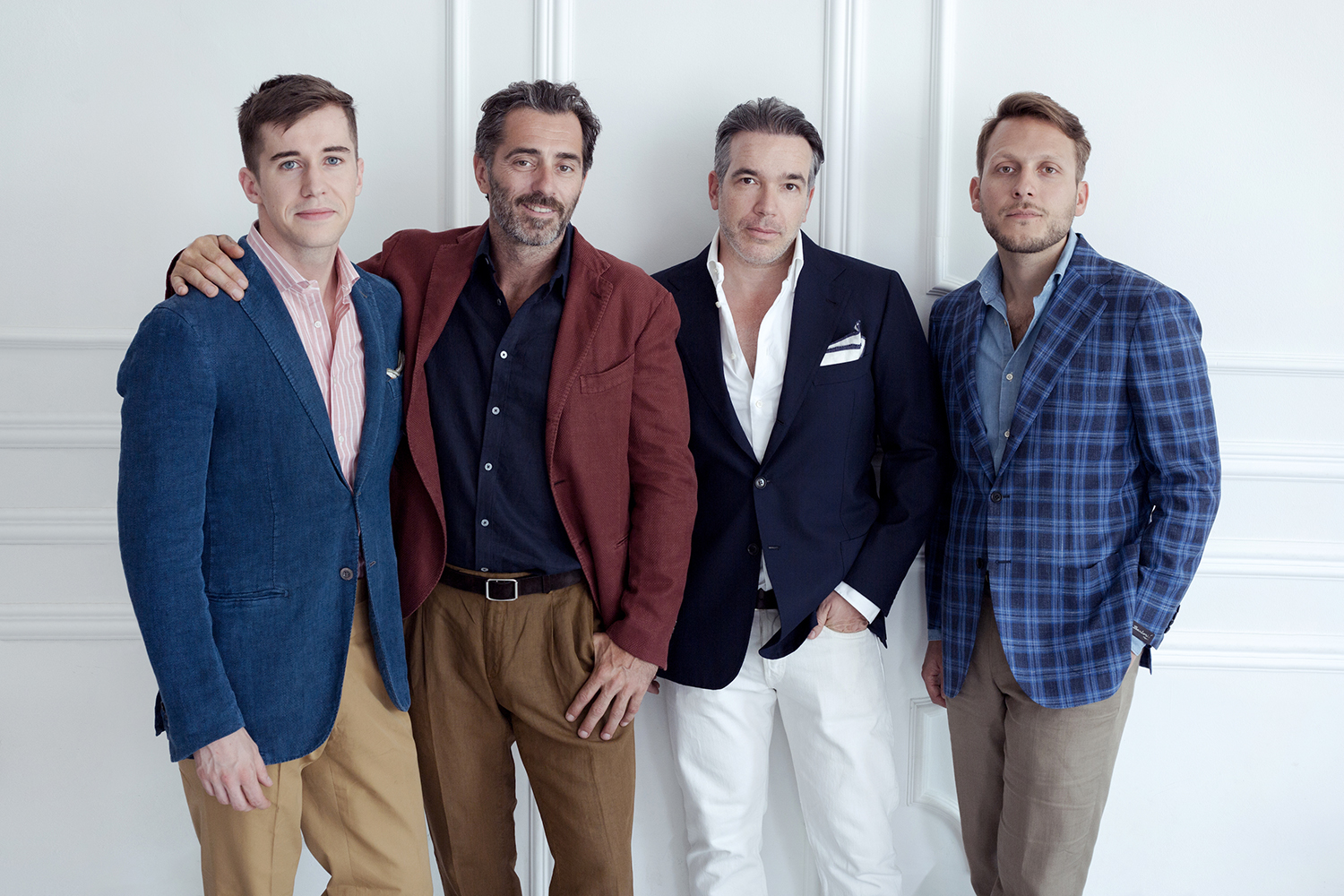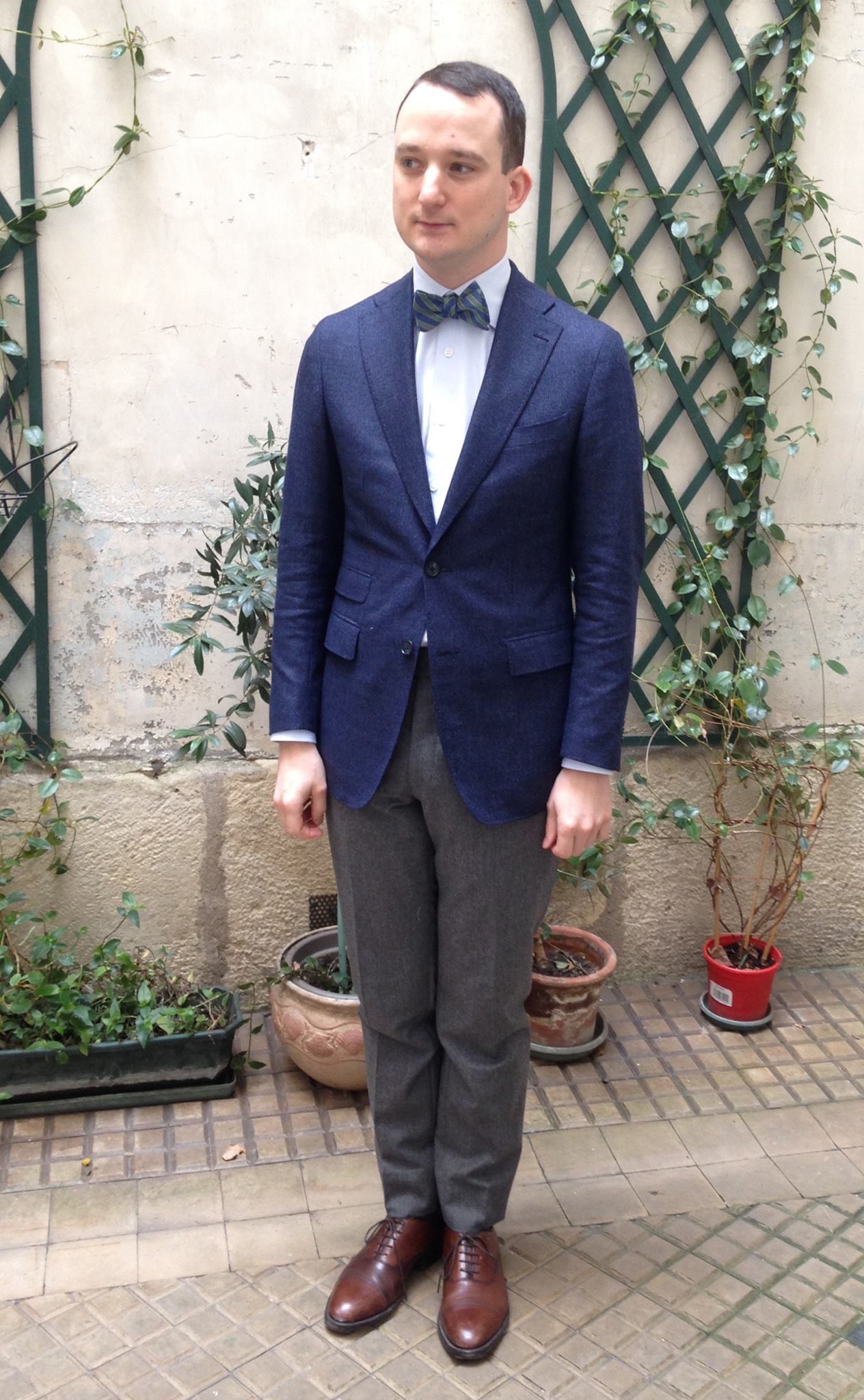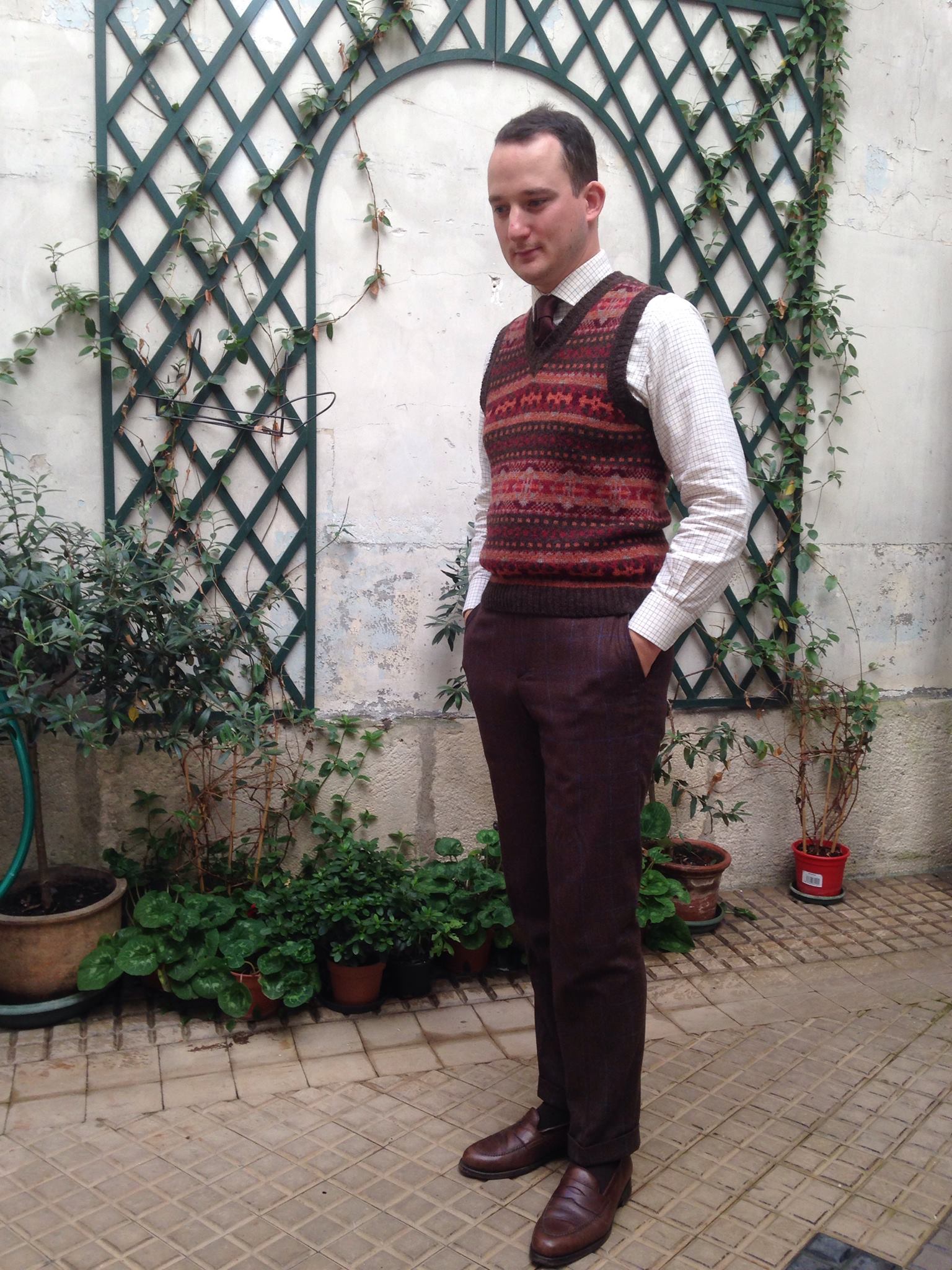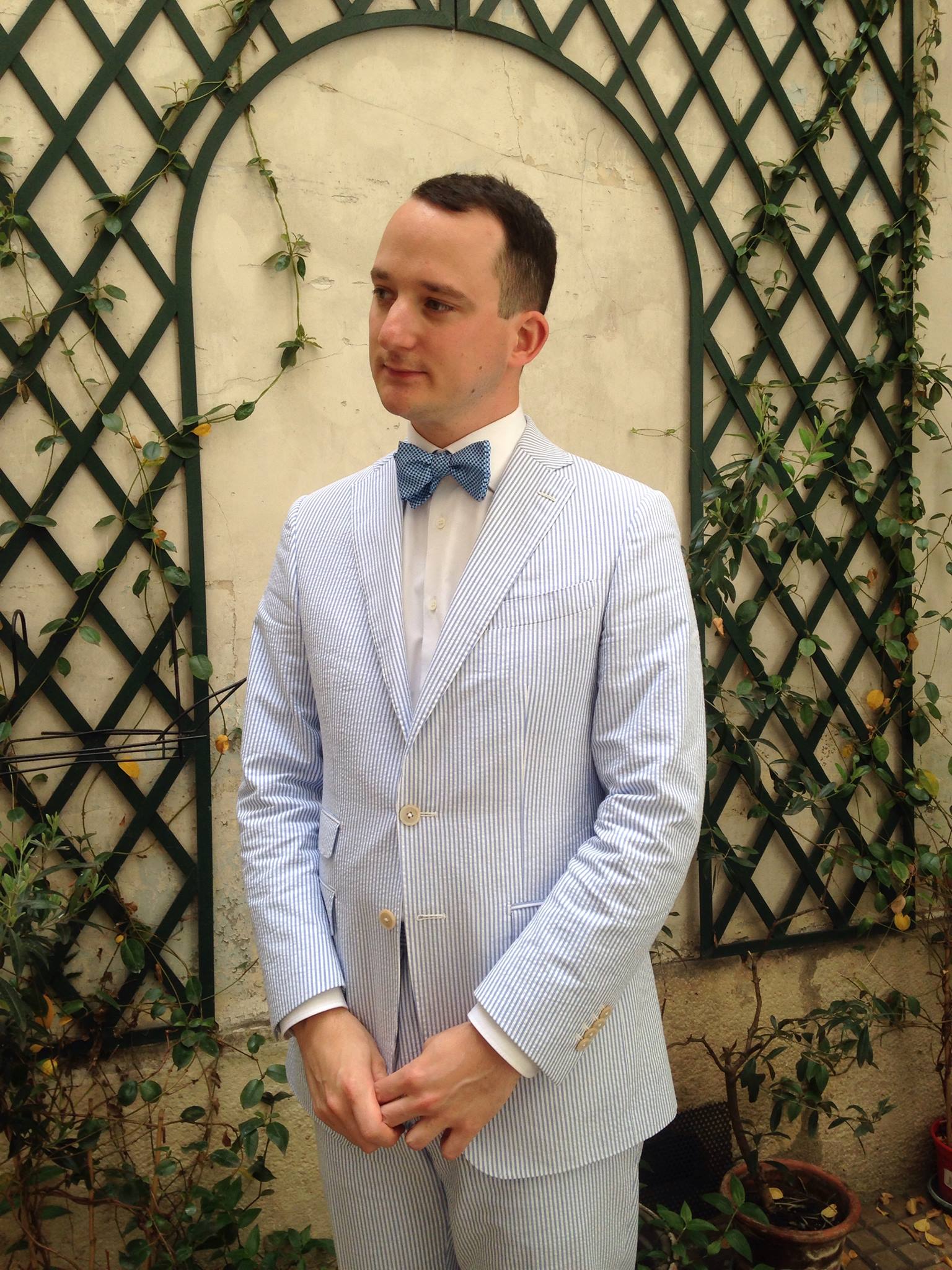-
An Interview with Romée de Saint Céran and Maxime Pilard Armand from Vulpilist
0January 29, 2021 by Ville Raivio
VR: Your age and occupation?
Maxime: I am 31 and am working full-time on Vulpilist.
Romée: I’m 37 and I am working half time on Vulpilist, half time on Croquis Sartoriaux, and half time as a senior head hunter.VR: Your educational background?
Maxime: I studied economics at a Prep school and then attended a Business school, majoring in Web Marketing and Luxury management.
Romée: I studied at a military college and then I attended a Business school.VR: Have you any children or spouse (and how do they relate to your clothing enthusiasm)?
Maxime: I am married. My wife likes when I dress classicaly but not when it’s too much cosplay – I can tell from her face when I wear a fair isle, tweed jacket and a fedora! There are also complains about closet space needed. In that regard, Vulpilist helped me clear some space by selling unworn clothes. The marketplace is a marriage improver in some way!
Romée: I am married and father of 4 kids. To be honest, I usually take off my clothes when arriving home and put a t-shirt and some jeans. Way more safe with kids! They’re all very tolerant with my passion even though my wife is also very happy with Vulpilist, because I can sell stuff that takes up a lot of space.
VR: …and your parents and siblings’ reactions back when you first decided to put your time and effort into style?
Maxime: I began to gain interest when I was a teenager. My family was not surprised as I walked in my grandfather’s footsteps – and he was a luxury fabrics and silk merchant.
Romée: I don’t remember seeing my grandfathers, who were both officers, without a tie, nor my father till he was working, so I can’t say my choice is a revolution. Meanwhile, I’m dressed pretty casually in my family time.
VR: What other hobbies or passions do you have besides apparel?
Maxime: I am fond of photography, history, cooking and hiking.
Romée: I love drawing, spending time with my family, and I’m also a big fan of football.
A Parisian lapel with pick-stitching and an asola lucida-buttonhole
VR: How did you first become interested in clothes, and when did you turn your eyes towards classic pieces ? Why these instead of high fashion?
Maxime: Family atavism! High fashion always seemed hollow to me in opposition to classical menswear which represented stability and tradition with contemporary twists.
Romée: I’m like Maxime! I’ve never been into fashion, and I don’t know anything about this universe, even though there are some trends in the classic menswear universe. But their durations are way longer. I chose classic menswear naturally, I remember when my parents gave me my first Hermès tie for my 18th birthday and a tweed jacket. I also asked for a tweed jacket for christmas, which was pretty honest.
VR: How have you gathered your knowledge of the classic look — from books, in-house training, workshops or somewhere else?
Maxime: I began by looking at Scott Schuman’s (The Sartorialist) blog photos in the late 2000s when he was still shooting gentlemen dressed classically. I also read a lot of books – Flusser’s, Roetzel’s and much more about tailoring, shoemaking, etc, which helped me gain both style and knowledge of the craft. In the meantime, I began thrifting for creative and budget reasons (I was still a student). This helped me learn a lot of empirical knowledge about how a garment is made, the techniques used, different styles of tailoring, ranges of ready-to-wear, etc.
Romée: I read many blogs, mainly in French, before buying books. I discovered Maxime this way, as he was running Le Paradigme de l’Elegance, a very famous french blog in the early 2010s, now unfortunately defunct.
VR: Please describe how Vulpilist was born and what goals you set for yourself in the beginning. How has the marketplace been received so far?
Maxime: I ran Le Vestiaire du Renard for 6 years. It was an online thrift shop specialised in classical menswear and accessories. I met Romée when he was one of my first customers and we became friends. When I decided to stop this activity, as I had to move out of Paris, I began to talk with Romée about creating a specialised marketplace as we are both sartorial nerds and huge thrifters, both online and IRL. We observed that there are a lot of generalist marketplaces (Ebay, Vinted, etc) where you could find classical menswear, but there was nothing entirely dedicated to it. We thus decided to create the marketplace we would have wanted for ourselves, entirely menswear-curated, made for enthusiasts by enthusiasts.
We launched on October 1st, 2020 by reaching out to our respecting communities (Vestiaire du Renard for me, Croquis Sartoriaux for Romée). Vulpilist’s reception was excellent, beyond our expectation! Dozens of users talk and exchange everyday, over 1200 clothes and accessories have been listed in 4 months from SuitSupply to bespoke clothes, Meermin to John Lobb. It’s sometimes hard not to buy for ourselves before validating the listings! We are definitely meeting a huge need in the sartorial community and our next step will be to improve the functionalities and look of the website.
VR: Who or what inspires you?
Maxime: My family history. My forefathers were pioneers in Central America in early XXth century, where they were well-known silk and luxury fabrics merchants – their courage, boldness and cleverness never ceases to inspire me. Regarding style, I am inspired by individuals who are well-dressed and yet do not take themselves seriously, such as Luca Rubinacci.
Romée: I’m inspired by the codes of classic menswear that give a sharp structure with many rules, within which you can play once you know them. And playing can mean breaking the rules. So I’m inspired by people who are able to be subtle enough to be borderline without being off the mark. I won’t be able to name anyone in particular, but if you take a look book from the english brand Drake’s, it often corresponds, IMHO, to an intelligent mix of tradition and modernity.
VR: What’s your definition of style?
Maxime: To know the history of garments, to wear them appropriately or with a twist, and always relevantly to the place and people we meet. I consider style as a mean rather than an end.
Romée: I think being stylish is being accurate, and not standing out. If everybody notices your outfit, well, it often means that you may be too « showy ». Style comes through understatement.
VR: Which RTW-companies or tailors are among your favourites — and why?
Maxime: I particularly like Huntsman’s high-rise buttoning style, the pre-2010 bespoke Smalto cut and style, as well as Roman tailoring. Also, I am impressed by Orazio Luciano’s workshop which represents, to me, Neapolitan style and craftsmanship combined with the reliability of an organized structure – a very advanced MTM priced quite decently in regards to quality and end result.
Romée: I don’t have a huge experience in tailoring, unfortunately. If I had to go for a very formal outfit, a Parisian tailor would certainly get my preference. As I’m often dressed more casually (in odd jackets) I really appreciate the softness of Neapolitan tailoring. I have way too many Cesare Attolini cashmere jackets which are so nice to wear in winter, they’re like a second skin. As I said above, I love Drake’s sense of style which is a great source of inspiration for my sketches.
VR: Finally, why should Keikari’s readers visit Vulpilist?
Maxime and Romée: Vulpilist is a secure and smart way to find deals and unique garments. As such, our community is growing fast and more than 1200 garments, footwear and accessories are already for sale from all over the world. Vulpilist is not a random marketplace. We are enthusiasts and designed it for enthusiasts.
We curate every listing to make sure you will find the most relevant garments and accessories which are all filtered by sartorial criteria.Want to find a size 38 canvassed ready-to-wear suit? Yes, sir. A pair of size 9.5 bespoke oxfords? Of course. A paisley tie or a pocket square printed with animals? Right away.
Furthermore, we take a lot of time to advise our community especially on how to sell faster and buy smarter. As a result, Vulpilist is the place to find and purchase dead stock or second hand classical menswear. Goodbye painful thrifting, hello sartorial grailfinds! It is also the place to find a new owner for your beloved garments and sell them at the price they deserve. Be as cunning as a fox with Vulpilist!
Category Interviews, Links, Tradesmen, Web stores | Tags:
-
In Praise of the Quality of Edward Green Shoes
0March 4, 2020 by Ville Raivio
Over the rolling years, I must have owned more than 150 pairs of welted leather shoes, most of them now sold to new homes. My goal with this silly project has been to find out which things lead to quality in men’s footwear; that is, which leathers look and age best, what last shapes are both pleasing and comfortable, which details are helpful as well as stylish. The ultimate end has been to find out who makes the best damn shoes on the planet. I’ve done the same with collar shirts, neckties and other clothes too, but see the shoe list at the end of this post. Today, after more than 10 years of searching, I feel I’m ready to tip my hat to Edward Green. It’s true, of course, that EG’s pairs don’t have the most handwork (like Vass) nor the closest-fitting lasts (like G&G), they cost more than some artisanal pairs (any from Hungary), and so on. I still feel that their RTW shoes are the best damn things available. How do I love them? Let me count the ways.
Edward Green uses similar oak bark leather soles and heels as most high-end makers, and their finishing is not conspicuous. They do last a very long time in my use like other oaken pieces, the rubber heel piece as well. Most of Green’s models have a 270-degree welt which leaves the heel hidden under the shoe, and this makes the pairs look delicate. The welt is cut close to the uppers, which makes another notch on the list of delicacy. The welt stitching is always tight and clean, the welt is finished with tight, decorative fudging. The leathers Edward Green uses are simply superb, among the best in RTW-shoemaking. They have a clean, smooth grain with beautiful aniline dyes and burnished finishing. The amount of colours and antique shades EG offers is the widest I know of. The same goes for made to order-selection as the factory keeps stock of discontinued patterns and lasts as well. The leathers are easy to care for, polish up well, and crease little. The upper stitching is always tight, accurate, a joy.
The lining leather is soft and clean, though always in the boring sandy colour which nearly all factories go for. The heel stiffener gives a strong support and keeps its shape. Apart from the leathers and finishing, what endears me to EG are the lasts. They both look smart and feel great, there is no exaggeration in shapes or lines. They have a sort of look that forgoes time. I have seen Green pairs from 30 or 40 or 50 years ago that just look right even in the 2020s. What also look right are the upper patterns. Even the finest lasts lead to stupid shoes if the patterns laid on them have odd proportions. The designers at Edward Green have an immense sense of proportion, the patterns just look right. Finally, the factory’s pairs are extremely comfortable. I don’t know how they achieve this as the leathers and structures they use are no different from other high-end British makers. They just feel right when walking.
To sum up the points, Edward Greens are the best damn RTW-shoes because they have developed a tradition of doing many things so well. The leathers, the lasts, the finishing, the comfort, the looks — Green pairs have them all. Several shoemakers I’ve tried have some great things, some do certain parts better than EG, some fail comfort. It really is the combination that does it. What’s more, I have EG shoes made in different times, from the 1990s to this decade, and all have the same level of quality. The standard has been high and enforced, the results consistent. The sad thing is that Green’s shoes are dearly expensive. Their prices have risen several times over the 2000s, the pound is strong, and with Brexit looming in the near distance, the pairs are set to become even more expensive.
The quality is there but behind a gilt door. I, of course, urge the reader to try them out. My tip for the student and prudent man is to buy Edward Green shoes from non-retail sources. There are always dozens of pairs on eBay at any moment, and some of them are unused. The lot includes sample pairs, unwanted gifts, slight seconds, emptied stock, and so on. Another source are European web stores which don’t use English as the default language. I’ve seen Italian retailers, for example, offer Green shoes for 40% discounts from time to time. The gilt door can be passed with cunning and great treasures await.
* * *
To date, I have owned and used American shoes made by Allen-Edmonds, Alden, Johnston&Murphy (vintage), Florsheim, Rider Boot, White’s, Red Wing, Edwin Clapp.
From Hungary: László Vass, Heinrich Dinkelacker, Roznyai, Buday, Saint Crispin’s.
From Italy: Silvano Lattanzi, Borgioli, Buttero, Stefanobi, Salvatore Ferragamo, Romano Martegani, Luigi Borrelli, Italigente, Cortina.
The following from Spain: Meermin, Carmina, Crownhill, and from Portugal Carlos Santos.
From Great Britain: John Lobb, Gaziano&Girling, Cheaney, Edward Green, Loake, Crockett&Jones, Church’s, Tricker’s, Alfred Sargent, Sanders, Grenson.
Finally, from the French I’ve tried Bexley and Bally from Switzerland. I don’t count private label shoes on this list, such as the pairs Crockett&Jones makes for Brooks Brothers under the name Peal&Co. Whatever the label might read, they are still C&J shoes.
Category Footwear | Tags:
-
An interview with shoemaker Patrick Frei
0October 2, 2018 by Ville Raivio
VR: Your age and occupation?
PF: I am 36 years old and I am a shoe- and bootmaker. I make lasts, uppers, bottoms and trees.
VR: Your educational background?
PF: I graduated from high school and did a traditional apprenticeship with a master shoemaker before continuing elsewhere.
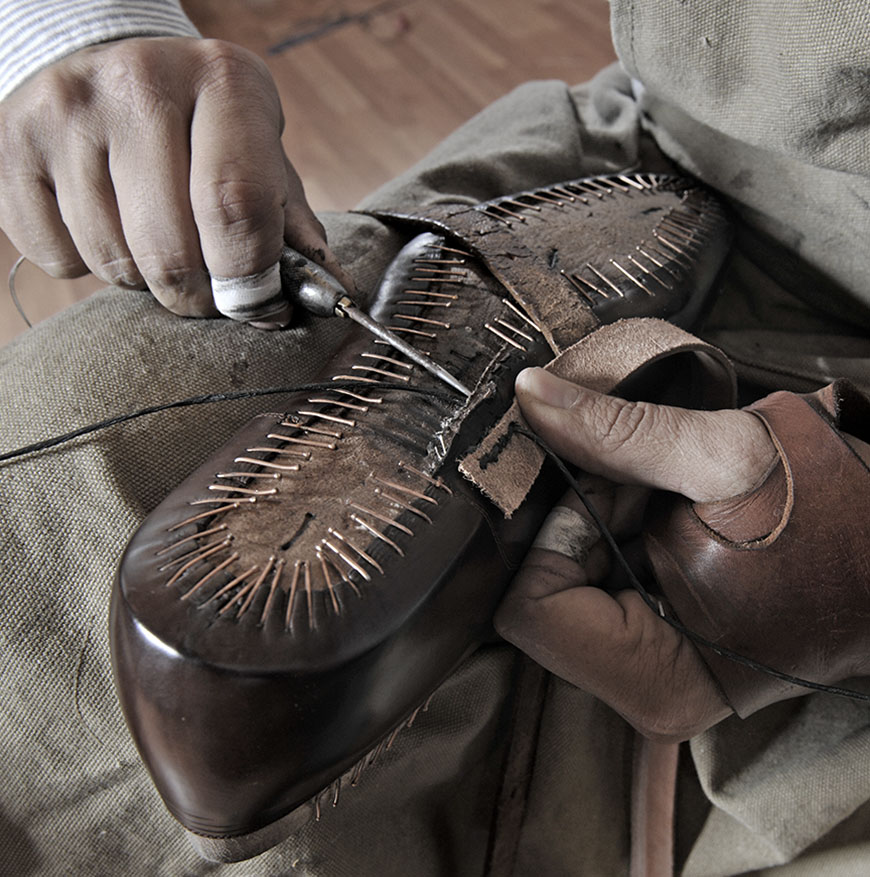
VR: Are you married and do you have any children (and what do they make of your enthusiasm for shoes)?
PF: I have two daughters (five and seven years old), who regularly visit me in the workshop. They like exotic leathers and the elder one works occasionally with wood on the last bench. My wife is used to my shoe obsession and likes what I do. If I need a second opinion on anything related to shoes I ask and trust her. Most of the time.
VR: How did your parents and siblings react when you decided to become a shoemaker?
PF: My mother always supported me and thought it was a good choice. My father had more doubts and wanted me to study. Today he is very proud of what I do. Without my wife and her trust in me and how I work I don’t think I would have got this far…
VR: What other hobbies or passions do you have besides footwear?
PF: I am really passionate about antique pocket watches. For me, many of the high-end watches made between 1750 and 1920 are pieces of art. Entirely made by hand. Perfection, from both a technical and an aesthetic viewpoint. I see parallels to shoemaking in watchmaking. Both crafts peaked around 1900 – at that time many craftsmen were very proud and managed to work at an extremely high level.
I also restore old Italian lever espresso machines and practice coffee-making daily.
I also enjoy juggling, hiking, beatboxing, cycling, campfires with friends, and malt.VR: How did you first become interested in shoes, and when did you start to focus on artisanal shoemaking?
PF: After school and civilian service I spent 18 months traveling through South America. I used to juggle a lot and do street performances around then and was really into classic suitcases. I met an old man in Cochabamba, Bolivia, who made traditional suitcases and trunks. I stayed with him for several weeks and learned how to make them. That was my first experience of leather-working and I wanted to learn more about it and get more deeply involved in it. Back in Germany I wanted to buy leather for a hatbox from a shoemaker. It was the first time I wondered how shoes were made. I had a friend who was already learning how to make shoes and he showed me a bit of his work and gave me the Laszlo Vass book. I immediately knew that I wanted to learn this gentle craft and was lucky enough to find a master, Feri Braun, who took me on as his apprentice in 2005.
After two and a half years I finished my education and started working on my own. Being young and self-confident, I thought that I already knew a lot. One day I visited my shoemaker friend Manu Pohl in Munich, who at the time was working with the royal Bavarian shoemaker Heribert Dirrigl. The Dirrigl family had been making shoes for over 400 years. Now only Heribert Dirrigl was left, still making shoes at nearly 80. It was there that I discovered sample shoes from 1900 that blew my mind. Such perfect craftwork and so balanced. Made 100% by hand without machines or electricity. I had never seen anything like them. That was when I realized I actually knew very little, and I wanted to learn how to make real masterpieces.
I studied and experimented a lot and visited numerous shoemakers all over Europe (Scheer&Söhne, Peron&Peron, Herve Brunelle, Foster&Son, Gaziano&Girling, Florian Haderer, etc.)
VR: Why classic models and not fashion?
PF: I generally prefer classic and traditional stuff. I think many beautiful things have evolved over a long time and are just perfect how they are. That said, I am very open to experiments and developing things. We should not forget that an Oxford or Full-Brogue was not always there. Creative minds invented them.
With traditional shoemaking I can make everything myself, from the design to the finished product. I can explore the secrets of every step and find out where the perfection lies for me. In fashion I often see good ideas or designs, but if the material is poor quality or the proportions of any part are not right or if it is not made properly, it will never be a masterpiece.
VR: Where does your knowledge of the craft come from – books, in-house training, workshops or somewhere else?
PF: After completing my apprenticeship and first seeing antique sample shoes, I started collecting a great many antique shoemaking books. I studied and experimented a lot and visited numerous shoemakers all over Europe. I was received everywhere with open arms, discovered old techniques and learnt that many shoemakers had created their own distinctive ways of making shoes over the centuries. On a visit to John Lobb I had the very good fortune to be invited to stay at the shoemakers’ cellar for a few days, and finally Mr. Lobb Senior gave me a day with an experienced last maker as a gift. After my education, where I learned the basics, I never worked for other shoemakers, and I guess you could say that I am mostly self-taught.
VR: How would you describe the house style of Frei shoes?
PF: I make different styles of shoes: fine shoes, country shoes and casual shoes, for men and women. Nevertheless, I think many people see a continuous thread running through my work. I suppose I am particularly influenced by the Belle Époque of shoemaking around 1900 and add my modern interpretation of sharpness.
What defines my house style, beside the last shapes and the actual making, is the unique way of making hand-scratched toe plates, my own styles of trees and newly developed construction techniques. For example, the extremely narrow waists and the Freiburgian welt, which is a kind of half blind Norwegian welt. Special and refined details are very important for me.
With the shoe I made for the World Championships I reached a new personal level and created a new category of shoes. I now offer Divine shoes in addition to my fine shoes. Divine shoes are very special – individual projects that I make as a piece of art. These shoes require between 300 and 450 hours of work and are available as artworks for collectors and as walking art. I suppose that in future the Divine shoes will be perceived as an important part of my house style.
Pictured: unique toe plates
VR: Do you have a favourite shoe model (e.g. Monk, Derby, Oxford, Balmoral boot) and leather type?
PF: Actually, I would have to lie if I had to pick one. It is more the overall picture of a shoe that makes me fall in love with it. If the pattern for the upper perfectly fits the type of last shape and the material is perfect for that model and the thickness and width of the sole match…
It’s the same thing with types of leather. Old stock hand-grained box calf is beautiful, but I also love the veg tan Tuscan leathers and many more.
VR: There are several quality shoe companies in Germany – why should my readers visit yours?
PF: In the bespoke shoe segment, I find myself in the high-end niche.
I always try to make the perfect shoes for the unique individual. I figure out what purpose the shoes will serve, what comfort means to the wearer and his feet. I take into account how the client dresses, his physical characteristics and his whole demeanor. In the end the finished shoes truly belong to that individual and the connection is obvious. This means that the shoes can’t go out of fashion for that person, even after many years. It is beautiful to see how many customers view their shoes as true companions.
Even if a customer orders a classic style, like a Toe-Cap Oxford, it has to be designed all over again: first, because the lasts are different every time, and second, because the customer is different every time. For example, a long toe cap is more modern and extrovert and a short toe cap more elegant and feminine. These decisions have to be taken in view of the person wearing the shoes.
My customers can be experts on shoes, but they don’t have to be. I navigate them through different models, styles and shapes and leave to them how many decisions they want to make and where they trust in me and my opinion as to what would be the right choice for them.
To choose me, one has to like what I do and who I am. The client does not only get the final product, but the whole process. The final product is strongly influenced by the customer and by me and the way I make shoes. My aim is not to increase efficiency, to optimize and rationalize everything and make it more economical. My aim is to create masterpieces that leave lasting impressions. I am driven by the idea of beauty and perfection.
VR: What is your definition of a well-made shoe?
PF: On the one hand a well-made shoe must be functional, which means comfortable, durable and good for the feet and the rest of the body. On the other hand, there is the aesthetic aspect: proportions, surfaces, clarity and the overall impression. I think the combination of traditional techniques, quality materials and expert craftsmanship can create an excellently made shoe.
VR: Who or what inspires you?
I am inspired by many people and things, but I want to name two magnificent watchmakers and one shoemaker.
PF: Abraham Louis Breguet created stunning watches at the end of the 18th century. His creativity, sense for beauty and purposefulness were just incredible. Many of his inventions are still used in the 21st century and he is to this day considered one of the greatest, if not the greatest, watchmakers of all time.
Ferdinand Adolph Lange built up a small industry for fine pocket watches in Germany in the mid-19th century. The level of craftsmanship he reached was extraordinary. He established a watchmaking village, Glashütte, from nothing, where his knowledge was passed on to many young watchmakers who went on to make some of the world’s finest watches, without forgetting their sense of community. They had their own pension system and took care of the people in the village. Ultimately, the German Watchmaking School was established in Glashütte. Watchmakers were trained at the highest level and produced real masterpieces.
Pietro Yantorny made some of the finest (ladies’) shoes in the world at the beginning of the 20th century. He was born to Indian immigrants in the south of Italy and raised in poverty. At twelve years of age he started to work as a shoemaker and made his way, without being able to read or write, via Nice and London to Paris. He worked mainly as an employed last and tree maker. In 1904 he opened his first store in Paris and won a Gold medal at the Expo in Rome. This marked the beginning of the manufacture of one of the most refined and beautiful shoes and trees I have ever seen.
Pictured: the gold medal exhibition-grade pair
VR: Finally, you recently won the Gold medal at the World Championships in Shoemaking in London, hosted by Shoegazing. What goals did you set yourself when making the winning shoe?
PF: Actually, when I first heard of the competition I decided not to take part, because I had so much work on and little time. In the end I simply didn’t manage to not sign up. It was such a big attraction for me to make my personal masterpiece. I have always loved the antique competition shoes in the cabinets of the royal shoemakers. These shoes are more objects of art than functional shoes. The shapes are exaggerated and the work is extremely refined and beautiful. That is what I wanted to achieve – the quality of the Belle Époque of shoemaking around 1900 with the careful addition of a modern take on design and some technical details I had developed myself.
It was a beautiful experience to make the shoe and then to meet many of the shoemakers and aficionados in London, and then of course be honored for my work.
With Daniel Wegan from Gaziano&Girling, the silver medallist
Category Cordwainers, Interviews | Tags:
-
Interview with Gabor Halmos from SARTORIALE
4June 4, 2018 by Ville Raivio
VR: Your age and occupation?
GH: 45, I am the owner of SARTORIALE.
VR: Your educational background?
GH: After finishing high school in Hungary, I moved to New York, where I studied Fashion merchandising and design at FIT.
VR: Have you any children or spouse (and how do they relate to your clothing enthusiasm)?
GH: I have two 2 boys (11 and 5), they’ve started sharing my interest in dressing and they are both very picky about what they wear, it can take some time in the mornings…They are also helping out in the office during their summer break.
My wife always looks great and she „accepts” my clothing obsession and understands when family vacations turn into “business research projects“ (I need to see all the interesting shops when we travel).
VR: …and your parent’s and siblings’ reactions back in the days when you began?
GH: My parents couldn’t have a say. They are happy that I could make a profession out of my obsession. I have 4 younger brothers and they always appreciated the nice clothes they got from me.
VR: What other hobbies or passions do you have besides apparel?
GH: MUSIC, regardless of genre! Thinking back periods in my life, I remember exactly what I listened back then. Good concerts I never miss, wherever I am. Seeing people like Miles Davis, David Bowie playing live was special, and I love small Jazz places in NY, like the 55 Bar…
I love traveling and prefer the Mediterranean climate and the sea.
I collect old things, they don’t have to be valuable, but they must be exciting, unique…
…and of course, my vintage watches; old Chronos, military and diving watches, regatta watches, they are all fascinating to me. Again, they don’t have to be expensive, just interesting and they sometimes surprise you when you check how their value has increased after a few years…
VR: How did you first become interested in clothing, and when did you turn your eyes towards classic style? Why classics instead of fast fashion?
GH: Growing up in Hungary in the 1980s there were not too many sources to getting great clothing, we often traveled to Vienna to see and buy quality stuff, well-made clothing. Trips to Italy at that time left the first impressions on me about classic style and sophistication, and watching old movies with Bogart, Cary Grant, Mastroianni had a big effect on me. I remember seeing Alain Delon in Le Samourai and Borsalino, he looked perfect, the definition of style. Later on, when I moved to New York this interest grew on me even more.
When done well, classic menswear has a timeless appeal, think of Paul Newman, or McQueen, their style won’t look out of place today. I feel buying the latest fashion pieces is a waste of money.
VR: How have you gathered your knowledge of the tailored look — from books, in-house training, workshops or somewhere else?
GH: I was fortunate to get to know some of the best dressed men in New York through my work with Vass Shoes and SARTORIALE. Two amazing lawyers: Ed Hayes and Paul J. Hanly have made a lasting impression, they are 2 of the best dressed guys in the world and I was lucky enough to get some vintage Savile Row pieces from them, which I had fitted for myself. I was fortunate to meet G. Bruce Boyer early in my career, he became a good friend over the years and always helped to define my way of looking at style, he is the nicest person you can meet, he has an endless knowledge of style, there was always something to learn from him. Dressing was so easy and effortless for these guys, no mystery, secrets, just put on the clothes you like and wear them, it is not a science and don’t take it too seriously, just enjoy it!
I have learned a lot from books, and later online sources like Styleforum and sites like Keikari always have something interesting and new.
VR: How would you describe your style?
GH: What I put on mostly depends on my mood, fortunately I can wear what I want. A pair of nicely faded selvedge denim is a staple, which I wear mostly with long sleeve polo shirts or button-down collar oxford shirts and a handmade, tailored jacket, it has to be soft and draped; because of my build I love Rubinacci, and A&S, they are the most comfortable for me. For shoes: a pair of split toe derby, suede chukka boot or jodhpurs, or vintage US made boots, or something from my Vass collection, or from my finished shoe project Demeter&Halmos. I love vintage outerwear and mix them with current items.
VR: Have you always worked with menswear? If not, what lead you to change occupations?
GH: When I started out in New York I worked in the restaurants and hotels, I never loved it, but it was fun back then.
VR: When was SARTORIALE born, and what goals did you set for the company back then?
GH: I was lucky to be in the right place, at the right time. The online business was completely new, there was room to grow. SARTORIALE was born in 2000, I started selling some of my old clothes on eBay, then I realized that I could make a business out of this. Started searching thrift shops in NY, they used to be ”gold mines”, later I was getting consignments of very high end bespoke pieces.
With a friend we were the first to distribute Vass Shoes in the USA, placed them at Bergdorf, Louis Boston and some other high-end stores and got notoriety on Styleforum and Ask Andy.
My apartment was my “warehouse”. Shoes and suits everywhere…I soon outgrew it.
Then I started traveling to Napoli and source some of the best clothes: Kiton, Attolini, Rubinacci, etc.
I am happy, that I have the finest crew in the world, a group of multitalented guys, I am very grateful to them!
VR: How do select the makers you stock on the webstore?
GH: I am always on the lookout for brands, makers who create products with character, integrity and honesty. These are mostly small, independent manufacturers, who make by hand. I am proud to offer items, which were never available before online like Sartoria Chiaia, Rubinacci London House, Ambrosi pants, Seraphin France for leather pieces and Mario Talarico’s amazing umbrellas.
I always loved vintage clothing, 1960’s denim, vintage motorcycle jackets, riding boots, old Savile Row suits, etc. You can also find those on my site, along with one of a kind runway pieces from top fashion houses.
VR: Why should my readers visit SARTORIALE.COM over other online quality outlets?
GH: Possibly we have the best and most eclectic selection of handmade tailored clothing, shoes, accessories, vintage pieces and top fashion, which you cannot find in any other shop, online or offline, regardless the price. We take great pride to offer personal customer care, sizing and styling advise, timely deliveries from two EU and two US locations and an easy return policy.
With part of the SARTORIALE team, from left: Mark, Les, Milan
VR: Who or what inspires you
GH: My family, every day.
VR: What’s your definition of style?
GH: The expression of your inner self and the conglomeration of the material decisions you made. One can only lie about it, but it will show.
Category Interviews, Tradesmen, Web stores | Tags:
-
Interview with Julien Scavini
0October 15, 2017 by Ville Raivio
VR: Your age and occupation?
JS: I am a 31-year-old tailor based in the 7th arrondissement of Paris, France.
VR: Your educational background?
JS: I grew up in Biarritz, in the Basque Country, in southern France. I started my Architectural studies in 2004 and graduated from the École Nationale Supérieure d’Architecture Paris-Malaquais in 2008. However, during my studies I have done internships which led me to discover the background of architecture. A lot of hours on the computer, not a lot of talking, not a lot of interesting projects. Always legal questions and matters. And during my last years of studying, I grew tired of avant-garde architecture, based on post-modern theories of Bourdieu, Derrida or Foucault. As a result, I no longer knew what architecture was about. However, this experience opened my mind. I understood that I needed rules and a ‘canon’ to think inside a structured universe. I thought about learning cooking because is has rules too. But I preferred style and fashion. This lead me to tailoring. I read a lot about men’s classical wardrobe during the last year of studies.
As a result, I have joined the School of Tailoring, whose headmaster was the Master Tailor Guilson. It wasn’t easy at first! I had to learn how to sew from A to Z. Of course, I stitched my fingers under the sewing machine; yet, as I had a very structured idea of men’s fashion, I had an advantage over the other students. I knew what was a three-piece suit, the difference between a morning coat and a tail coat, when, where and what to wear with those, etc… As I entered the school, I started a blog called Stiff Collar. The goal was to share as I was learning about the making of a suit and rules of tailoring, and to defend it to some extent!
VR: Have you any children or spouse (and how do they relate to your tailoring enthusiasm)?
JS: not yet :)
VR: …and your parent’s and siblings’ reactions back in the days when you began?JS: They were surprised. As my father was an engineer, he was rather doubtful. My mother was very curious and supportive. These days, the overlap between very different educational backgrounds is seen as a skill and a positive thing.
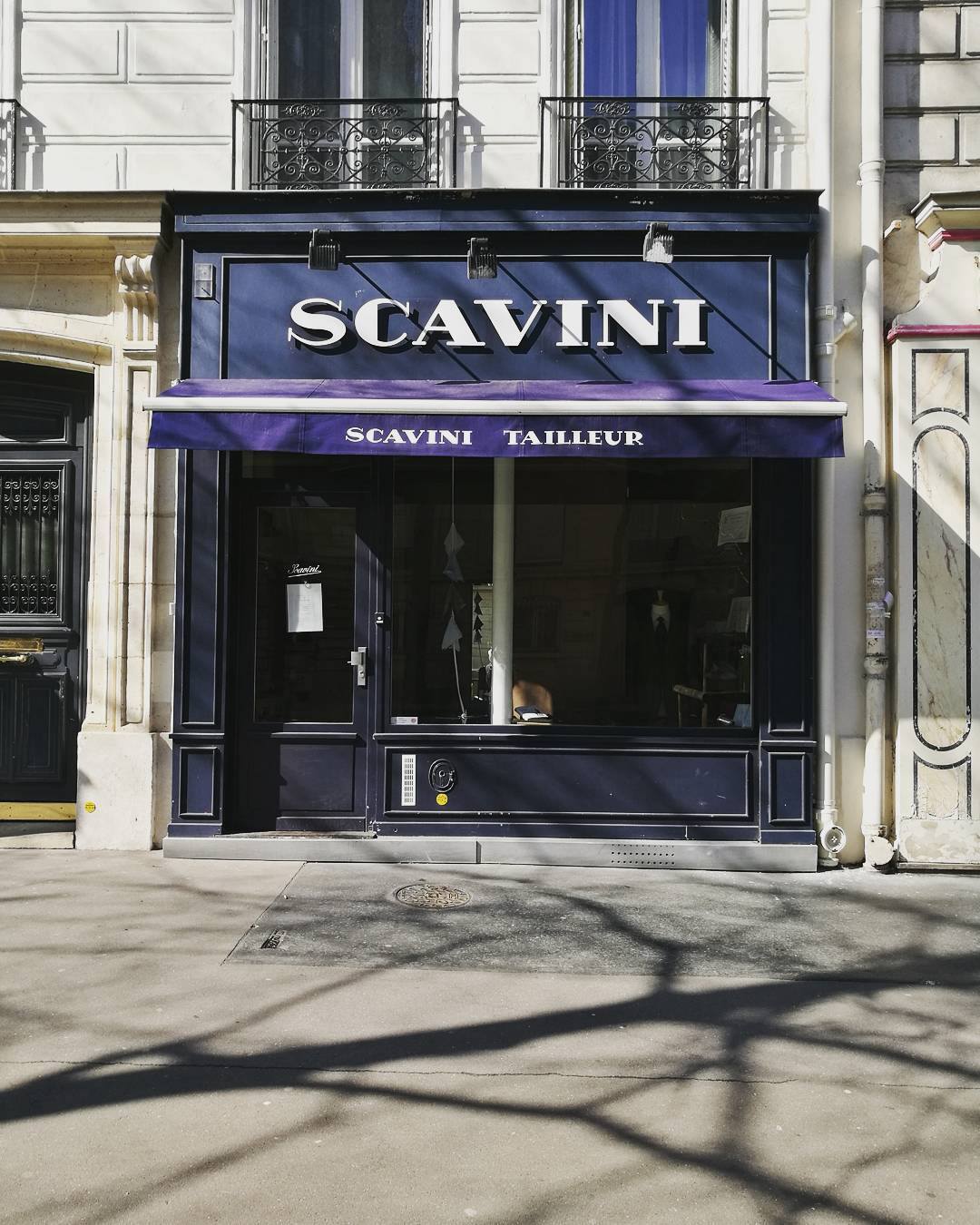
VR: What other hobbies or passions do you have besides apparel?JS: Aviation — I am about to publish a book about the Roissy-Charles-de-Gaulle airport! I am fascinated by civil aviation: I rarely spend a day without going to see the website airliners.net. I even started taking private piloting lessons. But I need time, which I have not. Alas.
My pleasure is always to discover new things, particularly in science and technics. I love watching How It’s Made on Discovery Channel. This is why I am so interested by the factors of a suit.
I am interested in old cars too, particularly old Bentleys and Rolls. I am a big fan of English taste and style. Castles like Howard and Blenheim, perfumes from Penhaligon’s, the spirit of the Yorkshire Dales. Curiously, I travel much more in USA than in England. I enjoy a lot the smiles and friendliness of Americans. I love observing the real American way of life in the small cities across USA. I love particularly the architecture of New England, its brick and with stucco. The young republic style visible in the East.
VR: How did you first become interested in clothing and when did you turn your eyes towards classic style? Why classics instead of fast fashion?JS: I have always liked to be well-dressed and attentive to fashion. As a teenager, I was always at the peak of fashion in the Basque Coast. It was a fashion that was all about the sun and surfing. So I was wearing a lot of Billabong. For shoes, I was in love with the Chet Thomas IV model from Globe! A collector now. When I came to Paris, I understood that my loose-cut jeans, hoodies and my skater shoes were not fit for the architecture world. So I started to wear black turtlenecks and black coats and black trousers and black shoes, as all architects do. But with white tennis socks! Haha!. And that was a bit eye-brow raising. But I swiftly understood it wasn’t me.
At the time I was fascinated by the marvelous Hercule Poirot, iTV series and later by Brideshead Revisited from BBC. Needless to say, I deeply fell in love with the classical style and elegance of it. Even my architectural taste evolved towards a more classical approach, based on symmetry and harmony of the classical lines. As for fast fashion, it never was my cup of tea but I was good customer of Hackett, which has helped in the development of my classical taste.
VR: How have you gathered your knowledge of tailoring– from books, in-house training, workshops or somewhere else?
JS: I really like to study men’s fashion throughout the ages. I really like to read vintage tailoring books and to try it just for fun!
In 2013, I was contact by Marabout publishing to write a book based on my blog. ModeMen is now translated into Chinese and Russian. In 2014, Le Figaro Magazin contacted me to write columns about men’s classic fashion and wardrobe. In fact, the blog was very pleasing for the editor-in-chief and he wanted something like that inside the weekend edition. From that point, I published 150+ columns, always with one of my drawings. A book was published last year with the first hundred texts.
The same year, BBC France also contacted me because they adapted to French television The Great English Sewing Bee and they wanted a young tailor to replace Patrick Grant. The program, called Cousu Main (Handmade), is now on air for the third season.
I also published a small book, Du Fil Au Crayon, only on Amazon with all of my drawings. A translation From Yarn to Pencil will be launched in few days on Amazon too.
VR: How would you describe your own dress? How about your “house cut”?JS: I like to wear a suit, by opposition to an odd jacket outfit. I like it for its simplicity. Although I have, as well, some more daring outfits I personally like to keep it simple. A blue, grey suit, a discreet suit in a way. It is very paradoxical. I love so much the Paul Stuart style or Arnys. But each time I try them, I don’t wear the clothes often. I return to a classical navy and charcoal suit…
As for my house cut, we don’t have any specific one as we are working with custom-made suits. Moreover, I think that I am far too young to have yet discovered my cut!
VR: Please tell us when you decided to set up your own store, and what goals you set for yourself in the beginning. How have you been received so far?
JS: Because of knowledge gained at my apprenticeship with master Guilson, I knew what was bespoke. I knew the exigence within. However, I didn’t feel like staying for a decade in a workshop. I didn’t have it in me. So I decided to open my own shop and try to do a beautiful custom-made company that tries to be as close as possible to bespoke. I knew that I wanted to do full-canvas suits. So I started to work with an Italian workshop, Sartena. I bought their shop in Paris and renamed it Scavini. Later, I found another workshop, less expensive and located in Eastern Europe, which allowed more affordable prices without compromising the quality. Nowadays I am proud to say that my suits have contributed to raising the quality of the custom-made market of Paris.
VR: Why did you want to sell ready-to-wear trousers as well?
JS: It all started as soon as I understood that not all my clients wanted to invest in tailored odd trousers. Yet, when they tried to buy it prêt-à-porter, they were very disappointed. So I decided to develop a prêt-à-porter brand that would combine the savoir-faire of a tailor, excellence in fabric and a fair price.
VR: Why should my readers visit Scavini over other French tailors?
JS: Interesting question! I think they would be interested in a refined, European product. France is literally in between the United Kingdom and Italy, and our product is a reflection of it: we produce a very structured english-like suit with the softness and details of the Italian tailors. Our suits are fully canvassed, with a lot of handmade details, such as the Milanese buttonhole. The price range is 1150€ for a made in Europe model and 1600€ for an Italian-made one. I think it is a cheap price compared with the price in USA, often over 2500$ for an italian suit.
Lastly, it is important to note that we only meet clients through appointments: we like to take the time to discuss, to discern the clients’ personality, in order to make the suit as close to one’s desire.
Moreover, our suits are made to last at least a decade, which is usually rare and expensive. It is all about the small details! For example, our pockets are sewn from the inside, that way they won’t rip!
VR: Who or what inspires you?
JS: I really like Ralph Lauren, Brooks Brothers, Alden: very traditional products, houses with an acquired taste for subtle and sophisticated elegance. In France, Arnys was comparable, but since it has disappeared, I have more and more grown fond of Paul Stuart. I like old ‘maisons’ (brands) with a history of classical taste. Maybe a bit confidential. Paul Stuart, Arnys or Charvet, for example, are a bit ‘surrané’ (outmoded could be the translation but the word is not correct). A way of thinking in the old-fashioned spirit. Really difficult in the world we live in. I am impressed that these sort of brands could resist a too young, close-to-the-body fashion.
VR: What’s your definition of style?
JS: To be elegant is to be always appropriately dressed: I do not dislike sneakers if it fits into the situation. I also don’t like to be over-dressed. I like the elegance of the gentlemen and not the one of the dandies. The greater elegance is not to trouble the one who lacks it.
VR: Finally, in your point of view, what features do “good clothes” have?
JS: Resistance, durability and comfort. But more than anything, good clothes must correspond to one’s mind and make one confident in oneself.
Category French style, Interviews, Tailors, Web stores | Tags:

Keikari.com
On classic men's style, elegance, and the beautiful life.
